IN-DEPTH
The Oracle investigates gender disparities in STEM and humanities classes



PAGES 12-13
SPORTS
Social Media Editor Ellie Yuan takes a shot at water polo

PAGE 15

IN-DEPTH
The Oracle investigates gender disparities in STEM and humanities classes



PAGES 12-13
SPORTS
Social Media Editor Ellie Yuan takes a shot at water polo

PAGE 15
This year, Gunn students were met with administrative announcements about schedule changes during their first few weeks of school. Although many students perceived more difficulty in changing their schedules, this year’s scheduling complications paralleled past years’, according to data provided by the counseling department.

Since the 2020-21 school year, the counseling department has enforced a “no email” and “no drop-in” schedule-change policy for the first two weeks of school. They instead provide a Google form for students to specify which classes they wished to substitute others with, drop from or add to their schedules.
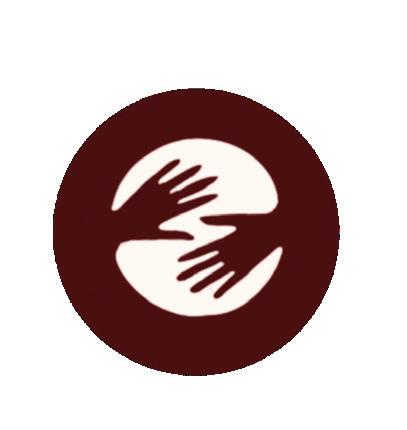


Last year the process was faster for me, and my request was basically identical this year.
Junior Jonah Weinstein
In May, PAUSD identified the following PAUSD Promise priority areas for the 2023-24 school year: Innovation, Serve and Celebrate Others, Mental Health and Wellness, Early Literacy, and Equity and Excellence. The result of detailed reflection on annual reports and feedback from community members, the Promise defines the district’s strategic plans to achieve identified goals and key performance indicators to measure progress in each area.
I’m very appreciative of students who come and speak because I take the words of every student into account and find it very meaningful.
PAUSD Board Member Shana Segal
Although most of the priority areas carried over from last year, Innovation replaced Healthy Attendance in this year’s Promise following more consistent attendance and increased interest in new artificial intelligence tools. Key subgoals include incorporating technology into curriculum and instruction, increasing students’ access to postsecondary opportunities. Because these goals are recent and constantly evolving, PAUSD Board Member Shana Segal explained the importance of engaging students. “We’ve been hearing that
it’s hard for students to attend after-school committee meetings, so we’re trying to hold more meetings during lunch and use the feedback to guide teaching practices and improve learning experiences,” she said. “As a board member, I’m very appreciative of students who come and speak because I take the words of every student into account and find it very meaningful.”
We’re trying to move from doing (community service) for credit to doing it because it’s a worthwile thing to do.

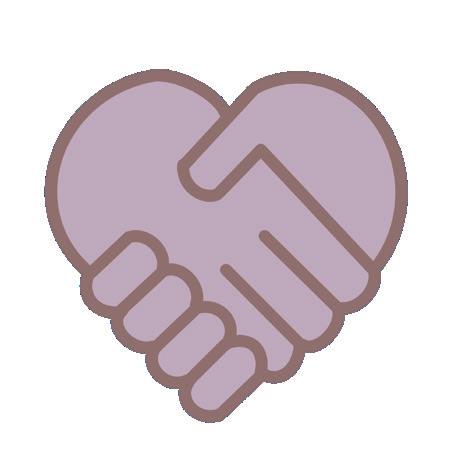
—PAUSD Board President Jennifer DiBrienza
Serve and Celebrate Others, defined in the 2022-23 annual report as “building people up through positive interactions and acknowledging those who invest in others,” has been a longstanding priority of the district. Still, Board President Jennifer DiBrienza noted that it continues to adopt new meanings. “We have a long history of expecting kids to do community service and then putting it on their transcript,” she said. “But we’re trying to move from doing it for credit to doing it because it’s a worthwhile thing to do. There are so many amazing things our staff does — we’re trying to recognize those.”
Examples of this recognition include the traveling builder helmet, awarded to employees who are







Some students went several days without a response from the department, and various upperclassmen — such as junior Jonah Weinstein — were surprised by the difficulty in changing or dropping courses this year. “Although my request was an exception because it did not fall under the form-request reasons, I didn’t expect to wait a week to get a face-to-face meeting,” Weinstein said. “Last year the process was faster for me, and my request was basically identical this year.”
Assistant Principal of Counseling Harvey Newland did not notice a major difference between this year’s scheduling complications and preceding years’. Lead Counselor David Leftwich confirmed that the number of requests this year was not an outlier and that requests were denied or accepted based on the same parameters as past years. Thus, students’ perceived difficulty most likely depended on personal experiences Course scheduling—p.2
18% 17%
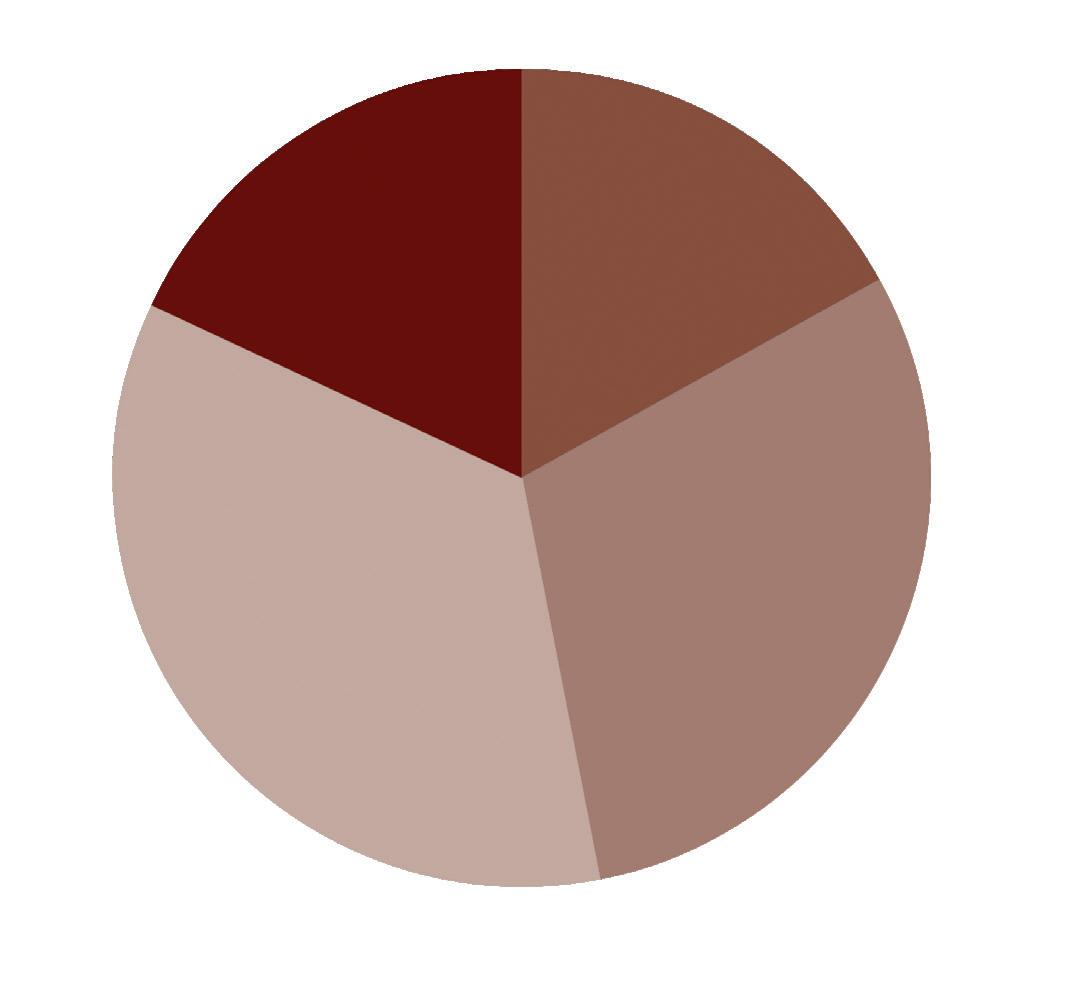
No schedule-change request forms

1 schedule-change request form
2 schedule-change request forms
3+ schedule-change request forms
Source: Self-selected survey sent out to Gunn students by The Oracle from Sept. 8 to Sept. 15 with 158 responses
“I’ve enjoyed the free candy, and the free Pride flags, the free buttons and a lot of the activities they had going on.”
—Kristy Rueff, 12
• 300+ Pride flags distributed
• 5 organizations involved: Palo Alto Library, Gunn Library, GSA, allcove, SafeSpace


• 6 tables of Pride activities

positively impacting their communities, and the State Seal of Civic Engagement, awarded to civically active high schoolers.
We now have a therapist for staff that anyone can reach out to, and I’ve already heard from some Gunn staff who said they’ve reached out. I think it’s so important that staff are supported because they’re on the front lines of working with our students.
Post-pandemic, Mental Health and Wellness has been another district priority, and it is one that DiBrienza expects will remain in future Promises.

In addition to providing tiered levels of support based
on student needs and expanding the Social Emotional Learning curriculum, the district is also working to bolster staff mental health support, according to Principal Wendy Stratton. “We now have a therapist for staff that anyone can reach out to, and I’ve already heard from some Gunn staff who said they’ve reached out,” she said.

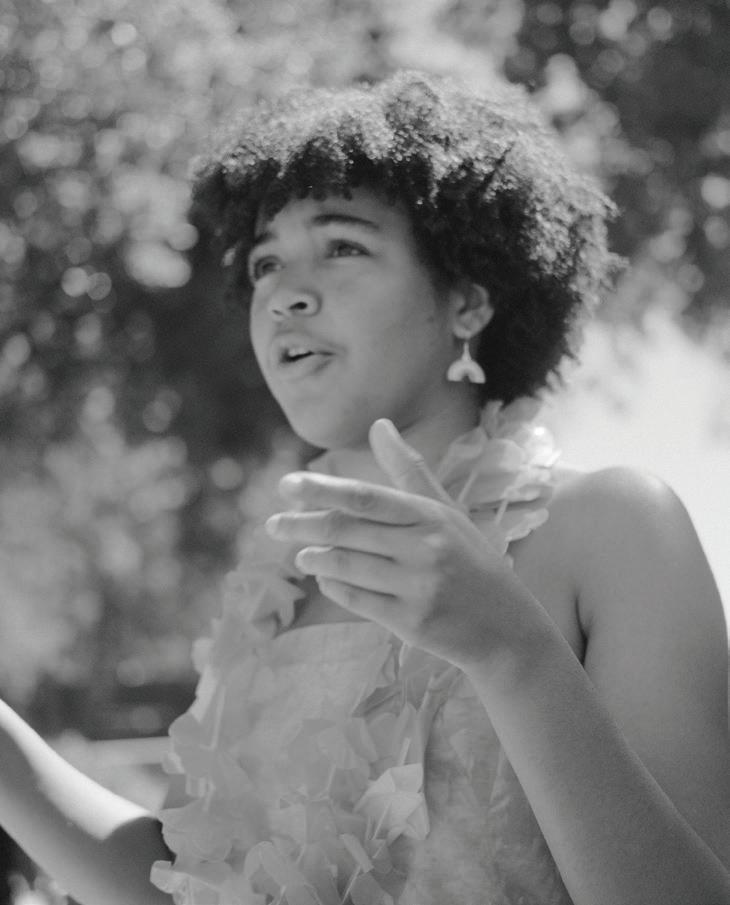
“I think it’s so important that staff are supported because they’re on the front lines of working with our students.”
The goals of Early Literacy and Equity and Excellence were also renewed from last year’s Promise. Data from the iReady Assessment, Smarter Balanced Assessment and Panorama Survey indicate that the district has made strides in supporting the academic achievement of underrepresented groups and the development of a more diverse and inclusive curriculum.
Stratton hopes that Gunn will continue to progress in both areas this year by maximizing resources and opportunities in equitable ways. “To interrupt predictable patterns of performance for target groups’ students, we know that you have to look at many areas, like school climate, curriculum and instruction, and community

engagement,” she said. “We’re working hard at Gunn with the SLAM (Student Leaders Anti-Racist Movement) program, the Student Leaders for Equity and the diversity
We’re working hard at Gunn with the SLAM program, the Student Leaders for Equity and the diversity commissioners on SEC to have more events that celebrate all of our different students and make them feel seen and special for who they are.
Principal Wendy Strattoncommissioners on SEC to have more events that celebrate all of our different students and make them feel seen and special for who they are.”
and the number of requests they submitted or received. One factor that did complicate schedule changes for a limited number of students was over-enrollment in Living Skills, a semester-long PAUSD graduation requirement. With administrative approval, the counseling department offered an online Living Skills course to some students, with each counselor selecting those they felt comfortable offering the course to based on their academic performance and demonstrated responsibility. “Online learning is not for everyone, and counselors wanted to do everything we could to make sure that we were intentional about the students we enrolled online,” Leftwich said. However, the online classes began several weeks after the beginning of the school year, leaving affected students’ schedules in limbo. “I had already been in my regular Living Skills class for nearly two weeks,” senior Rohan Kancherla, who is now enrolled in the online class, said. “I was called in by the counseling office and was given an
option to stay on-campus or take the online version. The whole (switch) wasn’t really an inconvenience, but it did happen completely out of the blue.”
While some students may have experienced longer wait times with changing their schedules, Leftwich noted that the current system is more efficient than the previous one. “(The old) process was cumbersome,” he said. “It involved students’ meeting with their counselors, obtaining a paper form, speaking to instructional leads. Now, (the system) is a straight shot because students don’t have to run all over the place.”
Newland sees the number of schedule changes as a positive indication of student initiative in their academic lives. “It’s always good that we have students who are reaching out and asking questions when they need it,” he said. “As administrators, we want to hear everything, and so having more responses and feedback is not necessarily a bad thing.”
59.4% of students surveyed reported that it took 1-3 days to change their schedules
Source: Self-selected survey sent out to Gunn students by The Oracle from Sept. 8 to Sept. 15 with 101 responses
“It’s a great opportunity so that students feel that there are opportunities for them to belong.”—Assistant Principal Mycal Hixon
780 Arastradero Rd. Palo Alto, CA 94306 (650) 354-8238
www.gunnoracle.com
Editorial Board
Editor-in-Chief
Amann Mahajan
Managing Editors
Chris Lee
Irene Tsen
News
Victor Dang
Michelle Koo
Charlotte Qian
Forum
Anne Dong
Annabel Honigstein
Jeffrey Kang
Features
Diya Bose-Malakar

Kaylee Cheng
Safina Syed
Centerfold
Maddie Cheung
Lise Desveaux
In-Depth
Dan Honigstein
Becca Wu
Sports
Katie LaWer
Vivian Studdert
Kelvin Xu
Lifestyle
Kaitlyn Chen
Vivien Chen
Bryan Xiao
Online
Yueun Hong
Sophia Hwangbo
Fiona Xiong
Social Media
Zoe Leontis
Ya-An Xue
Ellie Yuan
Photos Editor
Chinyoung Shao
Graphics Editor
Irene Hong
Staff
Business/Circulation
Nicholas Weng
Bryan Xiao
Oracle-SEC Liaison
Safina Syed
Graphics Artists
Vin Bhat
Emma Cao
Elise Hu
Aarushi Kumar
Natalie Lam
Karis Lau
Chaewon Lee
Jenny Lee
Jesse Li
Aeron Man
Sophie Rong
Sarah Xie
Photographers
Evelyn Chow
Grace Gao
Owen Koehler
Victor Peng
Benjamin Qian
Naomi Wang
Chloe Wu
Reporters
Claire Jittipun
Eanam Maor
Sylvie Nguyen
Eliot O’Connell
Violet Tivol
Fenton Zarlengo
Adviser
Kristy Blackburn
Nicholas Weng Business ManagerAt the end of last year, Gunn welcomed new additions to its campus: Vending machines from LetsGoVending found their permanent homes, moving from the Spangenberg quad to the K-building and the area behind the pool. Stocked with drinks such as Gatorade and Snapple, as well as snack items like Doritos and Rice Krispies Treats, the machines have become a convenient option for students seeking quick bites between classes.
Eight vending machines were present on Gunn’s campus before the pandemic but were removed after the school’s closure and subsequent construction projects. Student desires for more convenient food options prompted the return of the vending machines, according to Principal Wendy Stratton. “There were a lot of students who came forward to my office and were like, ‘We’d like to have access to vending machines or food options — especially those of us who (have) an afterschool
sport,’” she said. “It took a few months to get that to happen, but it was a student-driven phenomenon.”
Sophomore Griffin Burton has appreciated the machines. “I use (the vending machines) right before first period because my class is right next to (one),” he said. “I also use it during lunch. It’s just nice to grab something.”

According to Burton, however, some students have lost money due to negligence. “If you’re using your credit card, you have to press the ‘complete’ button before you leave,” he said. “Anyone else can use it, so it can keep going and going until someone presses ‘complete.’ There have been times where people accidentally bought things with someone else’s money, then all of a sudden, six or seven dollars go down the drain.”
Child Nutrition Administrator Alva Spence noted that the district plans to add one more snack and one more beverage machine to Gunn’s campus — the machines have been ordered and will be placed near the end of September.
On Aug. 7, PAUSD implemented a new mental health program for staff, allowing them to schedule counseling appointments with new Staff Mental Health Specialist Lisa Romero to discuss work-related or personal matters. This addition comes on the heels of a continued focus on mental health through the district’s PAUSD Promise framework.
According to PAUSD Director of Mental Health and Wellness Dawn Yoshinaga, Romero provides more direct therapy for staff. “When you’re in your most vulnerable state, you can’t think straight when you’re online and there’s so many clicks to get to the right place,” Yoshinaga said. “(Romero) has a calendar that’s available, and staff can immediately schedule something.”
The appointments themselves can take place online or in person. “As a staff mental health specialist, I conduct either a 20-minute
phone call or a 45-minute in-person or video session to address mental health concerns, offer resources and assist staff to begin the therapy process,” Romero said. “We create a safe space for discussing work-related or personal issues.”
The district offers other mental health services that include counseling sessions through teachers’ insurance providers and free access to Care Solace, an online service that helps individuals access mental health counseling programs. However, district leaders and educators collectively agreed that these services were unable to sufficiently support PAUSD employees due to their complicated and often-delayed scheduling process. “We have an employee-assistance program where employees can get eight free (counseling) sessions through their insurance, but we want to support staff right where they are,” Yoshinaga said.
These new counseling sessions, however, are meant to guide staff to psychological treatment and don’t function as long-term therapy options. “(Romero) is there to support you to get to that (long-term) care,” Yoshinaga said.
The Oracle strongly encourages and publishes signed Letters to the Editor and Comments. Comments are generally shorter responses, while Letters are longer pieces of writing.
Please include your name, grade and contact information should you choose to write one.
This shift reflects the district’s commitment to addressing staff mental health after a stressful era of online school. “(The pandemic) took a toll (on staff), just like it did on our students and our families,” Yoshinaga said. “Now is the time where we want to put our money where our mouth is and provide therapy options for staff.”
Letters and Comments may be edited to meet space requirements, and the writer is solely responsible for the accuracy of the content.
Letters to the Editor, Comments and ideas for coverage may be sent to oraclegunn@gmail.com. These letters do not need to be from current students.
And, more than ever, we’re going to be reaching out to you. As usual, we’ll send out polls, feedback forms and entreaties for story ideas. But this year, we’ll also be asking you to participate in focus groups and surveys that will help us adapt our journalistic approaches to best inform and empower you. What do you want The Oracle to cover? What big-picture changes need to be made? Your feedback is essential to help us better serve you.
Dear Titans, I present to you this year’s first print installment of Oracle coverage — you hold in your hands what some might call the “first rough draft of history.”
Though that quotation may be a little dramatic — some might say cliched — it is, in many ways, true. These pages are a snapshot of September 2023 at Gunn: They include everything from oncampus news to sports updates to features on your peers. This issue is the culmination of dozens of interviews, digs through databases and editing sessions, and it’s only the first of eight you’ll receive this year from your friendly neighborhood campus newspaper.
By now, The Oracle has had a few years to readjust after the pandemic, and we’ve gotten comfortable in our own skin again. So this year, expect experimentation: We’re placing an emphasis on investigative journalism via our new section, In-Depth (see pages 12-13), in an effort to better address pervasive issues on campus. We’re exploring multimedia content, recording podcast episodes and using digital tools to create interactive displays, with the goal of helping you better hear (literally) student voices. We’re going outside Gunn to report on community events, with heftier social media reporting and higher-quality photos.
We also encourage you to join us. The Oracle strives to capture the lives of our local community within twenty-some pages. Every month, we spend long afternoons putting the paper together, laughing hysterically and making last-minute edits while chugging extra-sugary boba at 9 p.m. We conduct staff gift exchanges with varying degrees of chaos and maintain a cultish aura (yes, we do call our adviser KGB — no, she has no affiliation with that KGB). I’ll be the first to say that the liveliness of the newsroom is infectious, and if it’s something you’re also drawn to, you’re in luck: You can apply to join our staff as a graphics artist or photographer, or sign up for Beginning Journalism next fall.
In the meantime, make sure you’re following us on Instagram (@gunnoracle) and checking out our website (gunnoracle.com) for online updates and multimedia packages. And take your time flipping through these pages: Read the stories rather than going directly to the crossword (you know who you are). Local journalism carries more weight than you might think, and there’s something in here that’s bound to speak to you.
Now is the time where we want to put our money where our mouth is and provide therapy options for our staff.
PAUSD Director of Mental Health and Wellness Dawn Yoshinaga
36.2%
Of students’ parents have access tO at least One Of their Online prOfiles
39.9%
Of students’ parents track their lOcatiOn Graphics by Irene Hong
Source: Self-selected survey sent out to Gunn students by The Oracle from Sept. 8 to Sept. 15 with 153 responses
 Ya-An Xue Social Media Editor
Ya-An Xue Social Media Editor



Growing up in the digital age, Gunn students are constantly surrounded by technology — it opens up a seemingly infinite world of entertainment, information and opportunities. For many parents, however, the online world adds another dimension of worry to the already arduous process of raising children. Although setting expectations for teenagers is important, parents should not track their teenagers’ online behaviors or block apps and websites because these practices are often ineffective: They damage trust and hinder teens’ development of selfcontrol and responsibility.
Many parents are aware of the risks of the internet: A December 2022 study from the Pew Research Center found that a majority of parents with children aged 13 to 18 are at least somewhat worried about their children’s online activity, with 71% concerned about explicit content, 70% concerned about large amounts of time spent online and 59% concerned about peer pressure. However, the way that parents choose to combat these dangers vary, with some choosing a hands-off approach and others adopting more stringent regulations.
Some parents, concerned that their children are being exposed to inappropriate content,
track online history and block specific social media and entertainment platforms, among other websites. Although blocking apps may give parents the illusion that they are protecting their children, this form of monitoring does not reduce — and can even exacerbate — the online dangers that children face. For already rebellious teenagers, imposing app or website bans to curb online activity may have the opposite effect, since children become more likely to attempt to hide their usage from their parents. This tendency is explained by the forbidden fruit theory, which says that there is a human tendency to want something more if it is off-limits or challenging to obtain. Teens’ hiding their online activity lead to an unhealthy relationship with technology and sever trust, since teenagers can feel as though their parents have a lack of appreciation for their privacy.
and encourage them to learn more about online safety. Teenagers also resist restrictions less when they are part of the conversation and have the opportunity to understand their parents’ point of view.
For already rebellious teenagers, imposing app or website bans to curb online activity may have the opposite effect, since children become more likely to attempt to hide their usage from their parents.

Online tracking also prevents teenagers from developing responsibility. If teenagers are only motivated by parental rules or surveillance, they are unprepared for a future where their guardians are less involved.
This doesn’t mean that parents should leave their children entirely to their own devices. When teenagers, who are still developing judgment skills, are left to explore the internet freely without parental regulations, they can form unhealthy habits that lead to lifelong consequences. Rather than relying on online tracking or blocking, however, parents can model acceptable behaviors and help their children become aware of the dangers that exist online through open discussion.
They can also set rules and consequences relating to online behavior and limit screen time. These alternatives could help teenagers feel as though their opinions are heard
Additionally, limiting screen time through parental controls or setting notechnology zones can counter technology overuse, bringing teenagers out of the online world into reality. With clear communication from both sides, these practices set teenagers up for a healthy childhood without infringing on their rights.
As schools increasingly incorporate technology as a learning tool, they should also support parents in educating students on online safety, especially for younger students who are being introduced to online resources for the first time. Technology in itself is not inherently good or bad. Thus, as children mature and change, parents should be observant and respond accordingly.
There are bound to be obstacles in parenting with technology. However, by establishing connection and understanding, parents can help their children develop healthy relationships with technology and with their community.
crucial to consider students’ varying learning styles and personalities. When course policies are molded specifically around students, it creates a comfortable environment where all students feel motivated and are genuinely interested in learning.
Claire Jittipun Reporter

Most students face various time demands, including weekly quizzes, exams, homework and extracurriculars. While every student manages differently, it is wrong to assume that being able to perfectly balance all of these responsibilities is a requirement for high-achieving students. Everyone possesses unique abilities and develops skills in differing ways and time frames. Students should be granted flexibility in their coursework in the form of more testing leniency and alternatives: Teachers can foster academic success by adapting to students’ individual strengths.
In certain cases, pushing students through rigid deadlines and expectations can motivate them to improve their academic performance. However, it’s
Courses that don’t accommodate different learning paces can harm students by increasing stress and decreasing academic performance. This dynamic was seen in a study that measured New Orleans high school students’ stress levels in 2018. Before taking the SAT, which includes long periods of testing with short breaks in between, researchers measured students’ levels of cortisol, a stress-induced hormone. The results showed that students with high cortisol patterns, and therefore more stress, experienced an 80-point drop in SAT scores. While stress can be self-induced, it is also promoted by course inflexibility and restrictive policies. In the same study, inherently strict testing environments resulted in a decrease in student performance, since test-taking abilities vary among students. A study conducted in 2020 by researchers in the Department of Psychiatry at the University of Gondar found that 54.7% of high school students experience test anxiety. Measuring a student’s
grasp of the material based on one test is unfair, since students can experience anxiety, struggle to focus in highstakes environments or face burnout during extended test-taking periods.
To combat this issue, courses can adopt more lenient testing procedures. Allowing students to utilize their learning materials during tests could help them feel motivated to pay attention and take thorough notes.

Students can also be tested in several ways, such as through group projects or presentations. In 2014, Eva Chiriac, a researcher at the NIH, concluded in a study that 97% of surveyed students preferred and felt more comfortable in a group-work setting compared to a restrictive testing one. Group projects and presentations can reduce pressure and cultivate an environment of active learning that’s motivated by genuine interest rather than fear of failure. Test retakes are another way of increasing coursework flexibility: Students are encouraged to truly understand the material and learn from their mistakes instead of disengaging from content due to low scores. Course policies should adapt to students’ differences rather than work against them to foster a community that benefits all learners.
Yueun HongWebsite Editor
Many students fall into the comfort of retaking assessments instead of putting in the time to effectively study the first time. Courses should have rigid retake policies and deadlines or offer no retakes on exams to encourage students to take responsibility, motivate them academically and improve their time-management skills.
Stricter retake policies allow students to take responsibility in managing their academic endeavors, increasing their motivation. According to Barbara McCombs, managing director of the Department of Applied Research and Technology at the University of Denver, students have a greater desire to engage in academic activities when they feel a sense of responsibility
for their grades. Thus, enforcing stricter policies for no retakes on assessments increases students’ attentiveness to their school work: Instead of relying on a safety net of test retakes, they are more attentive and take charge of their studying to fully prepare for an exam.
Alongside increasing motivation, academic responsibility compels students to manage their time wisely. Rigid deadlines encourage students to stay on track with their courses. Instead of procrastinating on studying, they are encouraged to plan out their time more effectively to avoid an overload of last-minute work. Time management is important because it contributes to a more healthful lifestyle: Effective planning can reduce all-nighters spent cramming and significantly increase how much sleep students get. According to the Sleep Foundation, lack of sleep can decrease attention spans, slow down cognitive processes and cause excessive hyperactivity such as fidgeting, which distracts other students from learning. However, with stricter academic policies, students learn to manage their time and focus on their academics during the day.
Although some may argue that students should be
given multiple opportunities to improve their grades to reduce their stress and anxiety levels, some stress can help students perform better academically. Elizabeth D. Kirby, Daniela Kaufer and their colleagues at the University of California, Berkeley, conducted a study on the development of brain cells under conditions of stress published in 2013. The experiment showed that the number of brain cells in the hippocampus, which processes learning and memory, doubled under high stress levels for a few hours. The study indicated that this increase in hippocampus brain cells improved memory. Thus, pushing students out of their comfort zones and allowing them to experience some stress can improve their academic skills.
Teachers can help students succeed by offering multiple opportunities for practice before assessments. Practice tests, projects or even games can engage students and prevent them from feeling overwhelmed with information. These steps will allow students to take more responsibility in their academic endeavors.
their stances on abortion.
Annabel Honigstein Forum Editor
In the wake of the Supreme Court’s 2022 overturn of Roe v. Wade, abortion has emerged as a highly contentious topic in the upcoming 2024 presidential election. The issue transcends mere political discourse, digging into deeply ingrained social, religious and ethical beliefs. For some, the abortion debate is about personal freedom and women’s rights; for others, it’s about the sanctity of life.
The abortion debate in the United States reached a turning point in the landmark 1973 U.S. Supreme Court case Roe v. Wade, which established the constitutional right to an abortion. Since the court’s 2022 decision in Dobbs v. Jackson Women’s Health Organization overturned this precedent, abortion is no longer considered a federal right, but rather a matter for each state to decide. This shift has resulted in stark contrasts between the abortion laws of states that protect access to abortion and those that have banned or restricted it. These laws, both protective or restrictive, have had tangible, immediate consequences on women’s autonomy, spurring women who may have been dispassionate before to become more politically engaged.
In this charged context, candidates are calibrating political strategies. Democrats are leveraging the issue to consolidate support among pro-choice voters by framing Republicans as staunchly anti-choice. President Joe Biden’s $25 million ad campaign
“These Guys,” launched on Aug. 25, asserts that reproductive health care decisions are personal and rebukes leading Republican presidential candidates
Donald Trump and Ron DeSantis for

On the flip side, Republican presidential candidates’ approaches are more divided. To appeal to religious and conservative voters, several Republican candidates are adopting uncompromising pro-life positions on abortion. Republican presidential candidate Tim Scott, for example, has espoused a national ban. “Republicans should not be retreating on life,” he wrote in a July 31 post on X, formerly known as Twitter. “We need a national 15-week limit to stop blue states from pushing abortion on demand.” This stance contradicts the data from most polls, including a July 2023 Reuters/Ipsos poll, which show a majority of U.S. voters oppose presidential candidates who favor strict abortion restrictions.
On the other hand, some Republican candidates, including Trump, are steering clear of providing definite responses. In an NBC interview from September, Trump evaded questions about whether he would support a federal ban, saying he prefers that the issue be left to state legislatures.
The varying strategies in the party suggest that Republicans are attempting to walk a fine line between appealing to their core supporters and mollifying the general electorate. This balancing act becomes more complicated when considering the influence of female candidates and voters.
A Sept. 7 CNN poll showed Republican candidate Nikki Haley leading President Joe Biden by six points, establishing her as the only possible GOP contender with a clear lead over President Joe Biden in a hypothetical general election match-up. Haley signed a 20-week ban in South Carolina as governor but believes a nationwide 15-week ban is not feasible. “No Republican president can ban abortions any more than a Democrat president can ban all those state laws,” she said during the first presidential debate. “Don’t make women feel like they have to decide on this issue when you know we don’t have 60 Senate votes in the House.” Her call for a national consensus on abortion includes banning late-term abortions and making contraception widely available. As the only female Republican candidate, Haley’s nuanced stance on abortion sets her apart from her male opponents and could resonate with a broader demographic, including more centrist women and young voters.
How women vote may change the outcome of the 2024 election: Women voters swinging from Trump helped deliver the White House to Biden in 2020, and midterm exit polls showed that a bump in young voters — especially women — helped Democrats keep the Senate in 2022. Today, the Democratic Party has an edge over the Republican Party in terms of young, female voters: According to a poll from the Kaiser Family Foundation, 36% of independent young female voters say
Democrats best represent their abortion views compared to 13% who say Republicans best represent their views.
Furthermore, an uptick in female voter registration, indicated by a New York Times article from September 2022, suggests that women will be increasingly pivotal players in the 2024 elections. Since the June 24 Dobbs decision, 64% of new registrants in Kansas, a historically Republican-voting state, have been women. In the six months before Dobbs, women outnumbered men nationally by a three-percentage-point margin among new voter registrations. After Dobbs, that gender gap skyrocketed to 40 points.
For Democrats, focusing on female voters, particularly those who are pro-choice, could solidify a base that is already leaning their way, making them an indispensable ally for a successful campaign. Republicans, too, have a compelling reason to prioritize women, particularly those who are pro-life.
Abortion rights are an issue that crosses the boundary between policy and personal values, making it one of the most hotly debated topics of the year. Women’s reproductive health rights have been a hard-fought battle for decades, and a changing abortion-rights landscape has galvanized many women to become politically engaged. And this debate will not only take place in the presidential election — it will be held in the hallways at Gunn, in classrooms and in clubs. Gunn students, who are navigating this divisive issue amid an already polarized climate, can hopefully look to nuanced positions for a different lens through which to view the ongoing debate on abortion rights as they approach voting age. The upcoming election isn’t merely a spar between candidates but a pivotal moment that will shape the world in which students live, vote and make choices about their own bodies.
“In my opinion, one of the most unfair political issues is abortion. I firmly believe that a person should have full control over their body and the decisions they make with it, and politics shouldn’t get in their way.”


“I think that gun violence is the biggest political issue today because it relates directly to the safety of individuals and students like us in America. There have been countless shootings in the past year and nothing has changed.”
“The climate crisis is the most pressing political and human rights issue. It is largely up to governments to implement bolder measures and stop worsening the effects of climate change while we still can.”
“The most pressing issue today is abortion law. People’s fundamental rights to their bodies have become politicized and dehumanizing laws and provisions continue to be implemented, which needs to change.”
—Tobin Parker, 10
—Talya Schube, 11
—Nishi Goyal, 12



—Omer Horowitz, 9 —Compiled by Annabel Honigstein

Sophomore Milcah Morrison is nervous. In just five minutes, she will be under the spotlight, filling the room with her voice’s powerful resonance. But when her hand is filled with the familiar weight of the microphone, and adrenaline drowns out the rest of the chatter, she remembers what music has always been for her — a safe haven.
Morrison has overcome the challenges of a tumultuous childhood and home life to pursue music, and has showcased her singing everywhere, from football games to international cruises. Her musical journey began at the age of 5, when she joined a local Russian choir group. In elementary and middle school, she supplemented her vocal skills by learning the violin and cello. She joined the school choir in seventh grade, dropping out briefly before joining Gunn’s choir during her freshman year. Even before joining choir or picking up an instrument, creativity had always been a crucial part of Morrison’s life. “I have had a troubled childhood with domestic violence and lots of abuse in my household, so I’ve always expressed my creativity as a sort of coping mechanism,” she said. “I remember when I was younger, when me and my mom would get into arguments, I would make up little songs about it and sing it out to help myself (calm down).”
Growing up, challenges such as abuse, foster care and homelessness hindered Morrison’s musical involvement. “I was homeless for 4.5 years, so we couldn’t afford music lessons — we could barely afford gas to get me and my sister to school,” she said. “I felt like I could not express (myself) or let everyone hear my voice because it felt like something was always in the way. I also missed school a lot, so I had to really focus on my education before focusing on my music.”
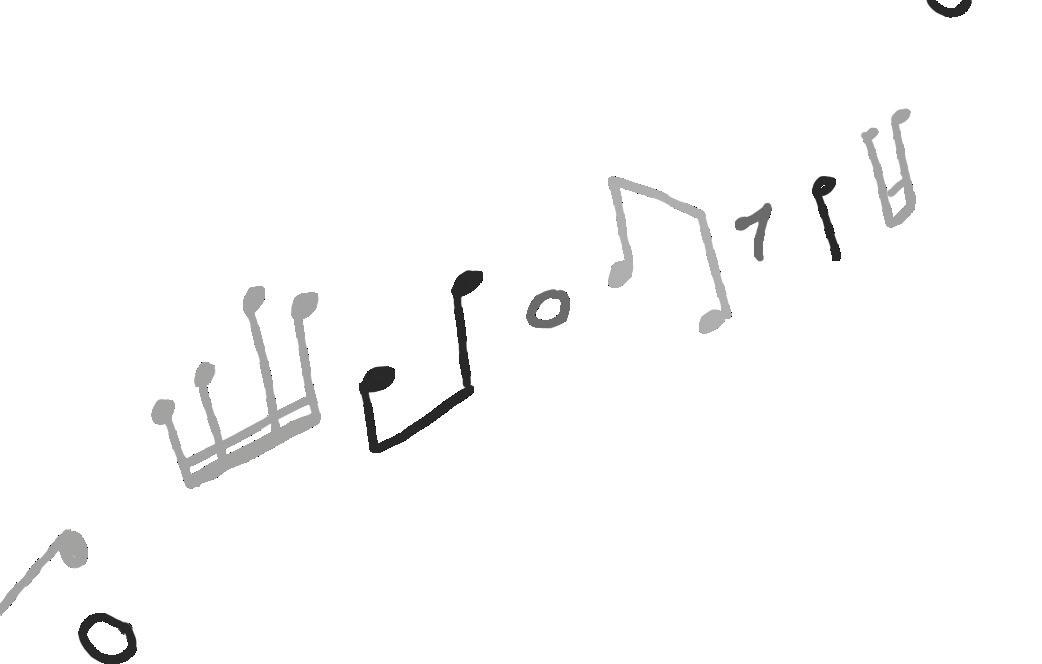
In freshman year, due to home difficulties and peer pressure, Morrison would skip classes — even choir, the only class she felt she could express herself in. It wasn’t until choir teacher Bill Liberatore sat down with her toward the start of the year, threatening to remove her from class, that she received a wake-up call. “Mr. Lib scheduled a meeting with me and my foster mother and basically said, ‘Why skip? You can get credit if you just participate,’” Morrison said. “He was encouraging me to not just waste my high school career skipping class. After that, I realized, ‘Okay, I need to stop skipping choir. I need to get my stuff together.’”
Morrison began focus ing on music more seriously and has made many public singing appearances since, performing in downtown Mountain View, a Palo Alto church, a New York subway and many other locations. She has had solos in performances inside and outside of school and performed the “Star-Spangled Banner” at football games, including the first home game on Aug. 24 and another on Sept. 8.

In June, Morrison and her foster family vacationed on a European cruise called Taulk, in which they toured France, Germany, Italy, Switzerland and the Netherlands. One night, after the boat docked in Germany, she sang the song “I’m Here” by Cynthia Erivo at an open-mic night for a restaurant. Afterward, she was formally asked to perform for the guests for the next three nights.


Morrison felt that this opportunity
elevated her skill as a singer. “Doing the cruise, getting input from so many different people from different countries definitely inspired me,” she said. “Because when I get on stage, I have this power: I command 100% of the attention of the room, and I’m the only one who’s able to control the power coming out of my mouth. I can set the tone for the whole room.”
Morrison also recently auditioned for American Idol, an American singing competition television series. Over her Zoom audition on Aug. 14, Morrison sang the same song she did in Germany: “I’m Here” by Cynthia Erivo.
This audition had long been on her bucket list. “I auditioned right when I turned 15, since that was the minimum (age requirement),” Morrison said. “Honestly, it was my dream to be on a big show like this. And I just thought, ‘Why not?’ If you make it, you make it, and if you don’t, you don’t.”
After a weeklong waiting period, Morrison finally heard back: Although she met the minimum age requirement and they were extremely impressed with her performance, American Idol was looking for a contestant with an “adult mindset,” meaning someone who was willing to take on this responsibility and fully adapt to a brand-new lifestyle — something Milcah had indicated she wasn’t ready to do.
When I get on stage, I have this power: I command 100% of the attention of the room, and I’m the only one who’s able to control the power coming out of my mouth. I can set the tone for the whole room.




Despite her disappointment, Morrison took the rejection in stride. “Once you’re in the industry, you’re kind of stuck there,” she said. “So for me, if I do make it, I’m risking my whole childhood. And I really didn’t really have a childhood to begin with, so I’m not going to take the risk and have to throw away the rest of it.”
Although Morrison plans on giving American Idol another chance when she’s a bit older, she also wants school to be a priority. If she had been accepted, she would have been afraid of falling behind in school again, since the travel involved in the competition would interfere with her attendance. “You’re expected to provide your own education,” Morrison said. “I would have to depend on the school and my teachers to send me work from class and future lessons. (American Idol) would be very time-consuming.”
In the meantime, Morrison will continue to pursue her passions and urge other students who have experienced similar obstacles in their personal and school lives to do the same. “I want people to read this and be like, ‘Okay, this is a person that has been through a lot and is able to overcome their trauma, work through everything and do something that they love,’” she said. “I would definitely say that if you are interested in something, explore it, and take every opportunity you can find.”
Morrison is grateful for not only the solo-performance opportunities that have taught her the logistics of an audition process and given her stage experience, but also the Gunn choir, which has provided techniques for her to harness the power in her voice. “I would honestly say that singing has saved me,” she said. “Being in the Gunn choir has saved me, and music has saved my life.”
In 1982, the first week of October was designated as Banned Books Week. During that year, First Amendment and library activist Judith Krug worked with the Association of American Publishers to bring attention to banned books in America after a surge in the number of challenged works. Since then, every year, libraries, publishers, authors and schools around the country have celebrated the freedom to read. Banned Books Week has brought the book community together — ranging from librarians to teachers to readers — for almost 40 years: It is meant to highlight the value of free and open access to information, past and current attempts to ban books and the harms of censorship. This year’s Banned Books Week will be from Oct. 1-7 with the theme of “Let Freedom Read!”
Since its inception in 1982, Banned Books Week has served as an opportunity to showcase and learn from challenged literature. According to librarian Daljeet Gill, Gunn’s library staff celebrates Banned Books Week by displaying prominent and lesser-known works that have been banned or challenged over the years. “I think it’s an opportunity for, particularly this library, to put up books that may not get as much attention,” he said. “There are some classics, but there are also some books that are somewhat new that may not get checked out too much, and when you put it up there, it may draw some attention.”
The banned books on display are all literary works that have been restricted from many classrooms and school libraries nationwide for containing themes that have been deemed inappropriate for students. According to Gill, these books are usually banned by small, local groups who make a lot of noise and push their concerns up to legislators. Gill believes learning about what goes into banning titles is one of the added values of the Banned Books Week display — it not only sheds light on the books themselves, but educates students on the motivations behind the bans and the ways bans inform the societal and political culture around what should be taught in schools.
For Gill, there is a fine line between responsible library curation and the banning of literature. While some books do contain content too mature for a high school library, Gill strongly supports their presence in public ones. It’s a different story, however, when books are written to be harmful. “I’m not really in favor of banning anything unless there’s a lot of misinformation that could cause people to take drastic, extreme measures that have no scientific backing,” he said. “There are books where I don’t think they should be in a lot of places
because it’s disseminating information that might be (purposefully) misleading.”
Gill noted that popular books are the main targets for banning, from classics with complex subject matters to modern stories with more diverse representation. “A lot of the more recent books that are most challenged are (those that have) anything to do with racial and social justice (or) dealing with LGBTQ protagonists — books that are trying to show different perspectives,” he said. “There’s a clear agenda that comes with it.”
Gill also emphasized the value of teaching banned literature. Many of the books he taught as a former English teacher were banned at one point or are still banned in many places. “I’d usually incorporate why there is such a big reason to try to ban the book (and) if (the ban) was successful or not,” he said. “I tried to utilize (the controversy) to try to connect it to why we still teach it today.”
Gunn, due to its location in left-leaning Silicon Valley, has faced fewer challenges acquiring banned books for its classrooms and library shelves. Gill, along with fellow library staff members, screens new additions to the library for inappropriate topics, from material inappropriate for high schoolers to hateful underlying messages. A form for reporting unsuitable content is available to students in the library.


Although books are usually banned to keep them out of schools, the act can also spotlight them. “(Banning books) takes away the ability for somebody else to really see what (life) is like for that person,” he said. “But sometimes, it does the opposite and shines a light on a book, and then people want to go and see what it’s all about.”

English teacher Jordan Wells has always incorporated banned books in her classes, including works such as John Steinbeck’s “Of Mice and Men,” William Golding’s “Lord of the Flies” and J. D. Salinger’s “Catcher in the Rye.” Wells, however, doesn’t choose these works specifically because they are banned. Instead, she intends for the books’ stories to raise awareness around differing perspectives and reflect the diversity of her students, building their abilities to connect with groups that they wouldn’t usually engage with. “Reading is an amazing gateway to understanding other people,” Wells said. “It’s a fuel for empathy. There needs to be space for everybody in what we do — in what we read. But the impact beyond seeing a diversity of authors (is) a diversity of topics. I’ve seen students being able to talk about incredibly difficult things, from sexual abuse to suicide to abusive relationships, because we were able to tackle it in a safe, fictional world.”

Common topics that Wells sees in banned books include profanity, violence and sexuality. In recent years, she has also noticed the lived experiences of marginalized people being challenged. “Essentially, (perspectives of) anyone who is not white, anyone who is not straight, are the books that are most under fire right now,” she said.
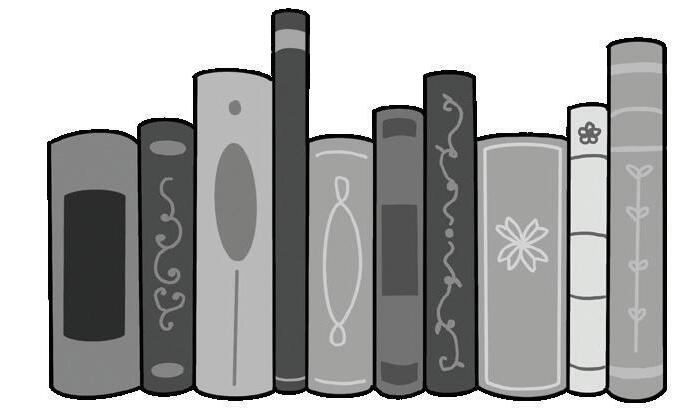



In her teaching career, Wells has yet to face issues regarding banned books, a dynamic she attributes to the Palo Alto community’s acceptance of difference. “I feel very lucky to be teaching where I’m teaching because I run into fewer administrative challenges than I saw as a teenager growing up,” she said. “I grew up in a small town, so my parents (who were) teachers ran into more friction than I do.”
Including banned books in the curriculum, however, can make it hard to engage every student in discussions, as some students are less interested in these topics. Despite such challenges, Wells fosters a classroom atmosphere that promotes meaningful, honest conversations and emphasizes other resources such as libraries that celebrate authors and characters of all backgrounds.


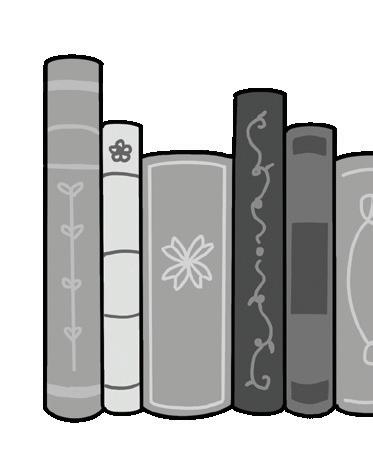

According to Wells, books are often banned by people who cannot see the impacts of the themes and topics discussed in the story. “Although the books take on challenging or diverse topics, that’s not necessarily scary,” she said. “A book is a safe way to take on a hard subject or to learn about a world different (from) yours.”


After reviewing the American Library Association’s list of the nation’s 100 most banned books, English teacher Kate Weymouth found that Gunn’s English department taught 18 of the 100 — including classic novels such as Harper Lee’s “To Kill a Mockingbird” and memoirs like Jeannette Walls’ “Glass Castle.” An overwhelming majority of these works cover the experiences of marginalized groups or include mentions of sexuality and violence, drawing ire from school districts across the country. The controversy surrounding these books doesn’t deter Weymouth from choosing to teach them. “People happen to ban books that are grappling with these real-world issues,” she said. “Why are we reading literature if not to grapple with these issues?”





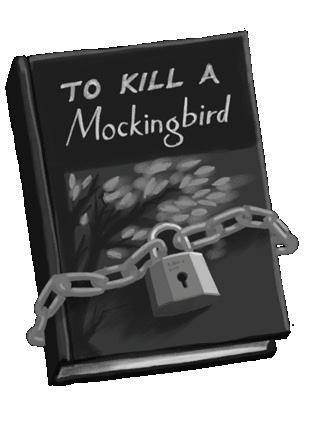
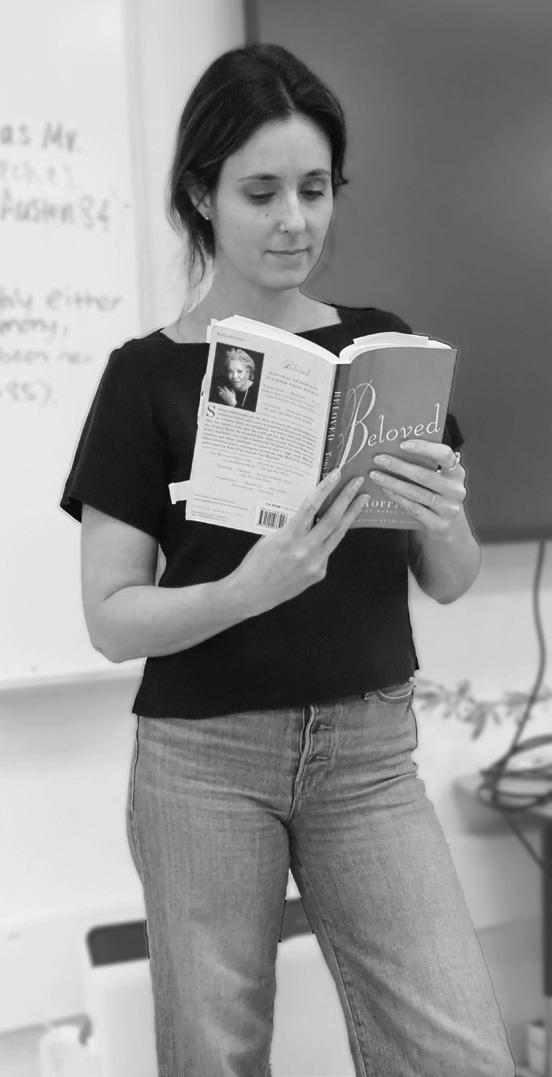
Weymouth has taught banned books such as Toni Morrison’s “Beloved” and J. D. Salinger’s “Catcher in the Rye” in class. She lists George Orwell’s “1984” as an example of a novel that features “problematic” topics, including misogyny and sexual assault. “Reading (about these issues) in a book in a class gives you an opportunity to critique the problems and call them (out) for what they are,” she said. “Just because students are reading it doesn’t mean they have to read it blindly and accept what the text is saying about it.”


Weymouth believes that book bans fail to give credit to what students are capable of understanding. “Banning books deprives (students) of opportunities to think about the world as it actually is,” she said. “It attempts to keep kids in a false state of innocence that doesn’t actually let them develop their moral, ethical and intellectual capacities.”
Weymouth keeps these banned books in her curriculum due to the books’ artistic merits and her belief that these fictional stories can help students make sense of the world around them. “(Books are) an ideal way to expose people to things that are challenging and complex about our world,” she said.
Weymouth has also increased diversity in her curriculum by including other media forms tackling social issues, such as the music video “This is America,” by rapper Childish Gambino.
“I think that we need to deconstruct that ivory tower kind of attitude towards literature, and we also need to broaden what we’re looking at in terms of having artistic merit,” Weymouth said.
From books about talking animals to a questioning patient in a psychiatric hospital, many works that are banned in other districts across the U.S. are included in Gunn’s English curriculum. English teacher Terence Kitada has taught these books in his ninth-grade classes and the Art of Visual Storytelling because of their academic value. “A lot of what the content has to offer is insights into the human condition, which is really what English class is all about,” he said. “Although some of those books are kind of scary or controversial and contain some things that are not wonderful to read all the time, that’s part of life and is part of what people go through.”
Kitada ensures that he also addresses why works are banned while teaching them. For instance, with Khaled Hosseini’s “Kite Runner,” Kitada notes how it was banned due to sexually explicit scenes. “It would be irresponsible if I just handed the class the book to read,” he said. “You do need to give warnings and talk about what’s going to happen.” Kitada similarly prepares his class for books that contain racist language, such as Harper Lee’s “To Kill a Mockingbird.” “It’s certainly a historical text, and the language is accurate for the time, but I also think about what the impact is of sharing some of the language with audiences in 2023, where that type of language towards Black people is no longer acceptable,” he said.
During the 2022-23 school year, 30% of banned books were about race or featured people of color, and 26% had LGBTQ+ characters or themes, according to PEN America, a non-profit nationwide organization that advocates for human rights through literature. According



to Kitada, book banning is less about protecting students from inappropriate content and more about excluding specific communities’ stories. “The harm, really, is limiting knowledge,” he said. “Maybe for younger audiences, the students might not have the skills to read a text and deduce the larger thematic ideas. But at the high-school level, you all are old enough to read texts and understand for yourself how you feel and how your own values shine onto that text.”

One of Kitada’s favorite books to teach is Art Spiegelman’s “Maus,” a graphic novel that follows the experiences of the author’s father during the Holocaust. The book was banned in Tennessee at the beginning of 2022 due to inappropriate language and a drawing of a naked mouse illustrating the author’s mother after she died by suicide. “It’s such an important graphic novel, and it had such an impact on comic books in general, so that’s one of my favorite ones to teach,” Kitada said. “It’s just like Spiegelman said, how he was just kind of shocked that people would ban his book so far into the 21st century. He’s kind of appalled that that would happen, and I have the same mindset. I want to know more about the people who felt like this is not appropriate for kids to read.”

Kitada believes that it’s worth examining whether those who have banned books understand what they’re banning. “It’s worth discussing why it is banned if it’s been for violence or language, and thinking about, worldwide, what the point of banning books is,” he said.

During peak concert season, students flock to stadiums around the world to experience live concerts or festivals featuring their favorite artists. An endless amount of anticipation and buzz surrounds these events: Tickets sell for thousands of dollars, and setlist predictions are posted as concert dates creep closer. Students attend concerts in hopes of building memories and connections with others — and, in some cases, maintaining social standing.
“group behavior.” “People tend to be stronger in groups,” she said. “(Group behavior) is a strong drive to be with each other. The need to talk to each other and be social is similar to the need (for food or water).”
Beyond the connections that are formed among audience members, Collier also stresses the one between concertgoers and the artist, which provides a sense of intimacy that listening to songs on a device does not. “(At a concert), I’m not just listening to the music alone or the song alone, but maybe the artist will tell me about what inspired them to write a song or the story behind something,” he said. “I get to know them more. I get to know them more personally, and that helps me increase my interest in and enjoyment of the song.”
Although Psychology Club CoPresident junior Maddy Fitzpatrick agrees that most concertgoers buy their tickets due to intrinsic motivations, she also notes the potential influence of peer pressure. “It’s similar to why people spend money on clothes or makeup,” she said. “It’s not necessarily bad, it’s just to fit in with a greater crowd.”
Although the main component of a concert is the music, Advanced Placement Psychology teacher Warren Collier believes that concert participation encompasses much more. “I can just (listen to my favorite songs) on Spotify or the radio,” he said. “Concerts are not just about the music — it’s about the experience. It’s about the bonding that you feel with both the artist as well as everyone else who is there for the same reason. That really helps increase the emotional impact.”
Choir teacher Angelina Fitzhugh agrees that the connections made at concerts add to their appeal. “There’s something about being with other people who love the same thing you do that increases the excitement and enjoyment,” she said. “There is nothing that can compare to being in a concert, and the artist stops but the singing continues. There’s nothing bigger than that.”
These crowded events have become all the more enticing in the post-pandemic world, leading to higher ticket prices as students become increasingly willing to shell out large sums of money, according to Fitzhugh. “Humans have this innate desire to be in groups,” she said. “We experienced not being able to be in groups during the pandemic, so I think that’s a part of what brought (concert culture) back.”
Psychology Club Co-President junior Kate Hamilton attributes the cohesive community and atmosphere of concerts to a psychological phenomenon called
According to Collier, these social pressures can make concert-going seem imperative.“If all of my friends go to (the Eras Tour), I will feel that much more desire to go, whether I have the money or (if) I’m begging my parents for it,” he said. “If all my friends are going, I would want to have fun with my friends.”
Above all else, however, Hamilton believes that the concert experience prompts self-discovery through the formation of tight-knit communities. “People are dressing up because they want to feel like they belong,” she said. “It’s a sort of sense of identity. People can connect to that (as they) are trying to find some kind of purpose with the music.”






 Written by Anne Dong
Written by Anne Dong
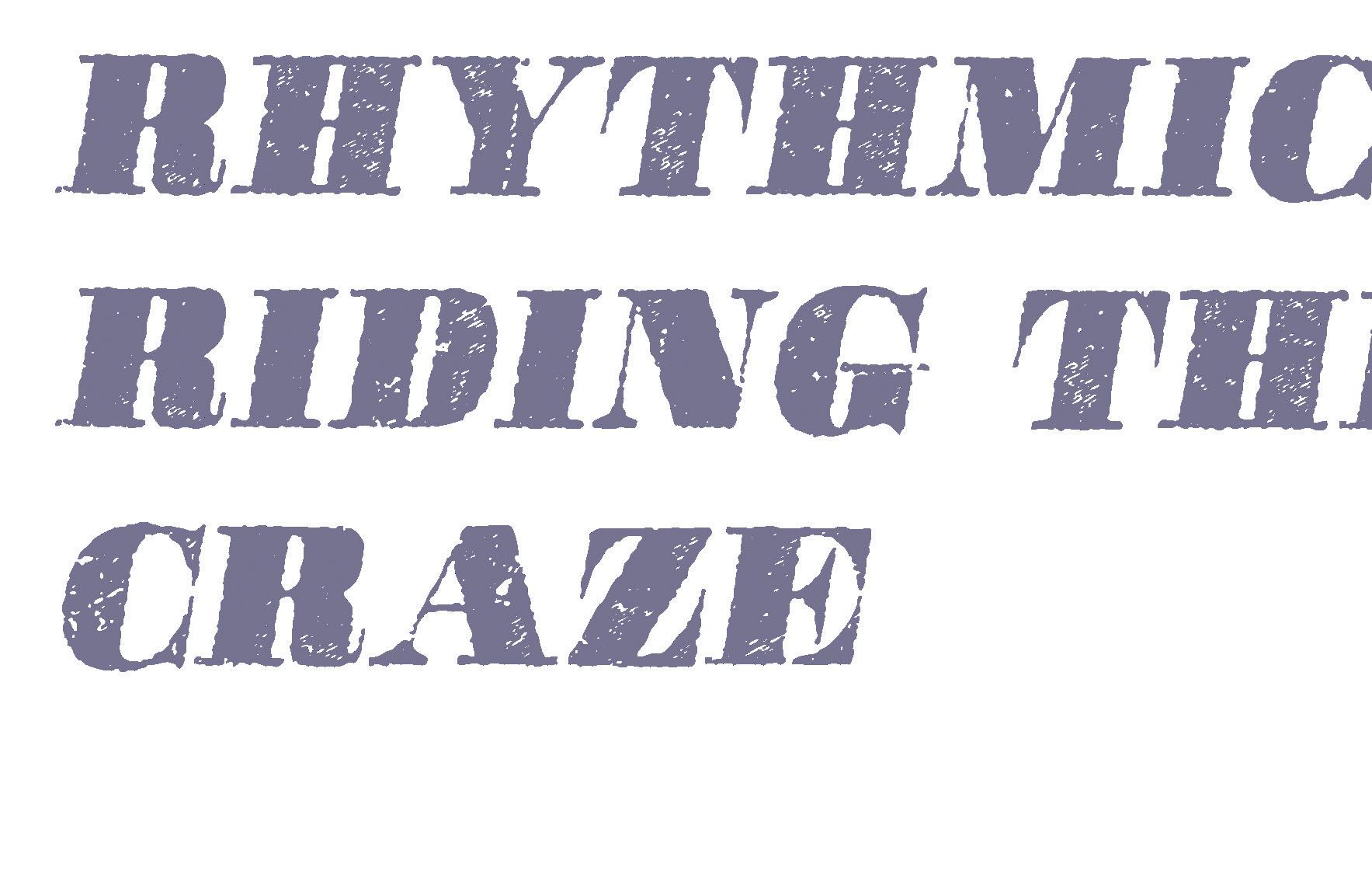




43.6%
Source: Self-selected survey sent out to Gunn students by The Oracle from Sept. 8 to Sept. 15 with 149 responses

of students have experienced concert foMo (fear of Missing out) after seeing people post their experiences on social Media
“Concerts are not just about the music, it’s about the experience.”—Psychology Club Co-president jUnior Kate Hamilton —AP Psychology Teacher Warren Collier

Home to many of the music industry’s greatest stars, such as Grateful Dead and Tupac Shakur, the Bay Area is a hotspot for live music. Concert attendance jumped after the pandemic, with LiveNation estimating a 24% increase from 2021 to 2022 nationwide. With young people leading the charge, social media has fueled live music’s rising popularity.
Junior Jacob Suh, who recently attended the It’s All a Blur Tour headlining rappers Drake and 21 Savage, sees a direct connection between people’s posts on the internet and others’ desire to attend concerts. “When they see multiple posts about certain concerts, it’ll make (them) want to go to join in — be within the status quo,” he said. “(Being able to) post can be a big part of why (someone) goes to a concert.”
As an avid concertgoer, sophomore Gwen Domine sees this newfound interest in concerts as a product of a viral trend. “(Taylor Swift’s) Eras Tour became such a trend on social media this summer that all of a sudden, everybody wanted to go,” she said. “Social media kind of blew the whole thing up even more.”
Senior Siena Tacy also watched the Eras Tour blow up on social media. She, however, attributes this boom to a resurrection of “2010s fangirl culture” and believes the movement is only amplified by social media. “Fangirl culture is this obsessive culture that comes with big obsessions with artists,” Tacy said. “People think that, somehow, they’re connected to these artists and that they would look at them differently.”
Written by Vivian Studdert

- plan ahead: Keep tracK of What concerts are coMing up



- taKe a BreaK froM social Media
- Join fan coMMunities





- consider online concert livestreaM options


Analysts predict Taylor Swift’s record-breaking Eras Tour will rake in over $1.4 billion in revenue total, surpassing Elton John’s previous record of $939 million from his 2018-23 tour. Earning an estimated $14 million in nightly ticket revenue, Swift has been credited for single-handedly improving the economy of each city she performs in, prompting politicians to insist that the Eras Tour be held in specific venues. In the U.S. alone, the tour has accounted for $5 billion in consumer spending: Each concertgoer spends $1300 per each $100 spent on tickets, as opposed to the standard $300 of extra spending per $100 spent on tickets, according to analytics company QuestionPro.
Beyond its effect on the national economy, the Eras Tour carries its own cultural significance. Swift’s fans began a practice of trading dozens of friendship bracelets after taking inspiration from the “Midnights” track “You’re On Your Own, Kid.” Swifties also dress up in elaborate costumes inspired by Swift’s ten albums, often adorning themselves in sequin-studded attire. These practices are not only limited to ticket purchasers. Swifties that aren’t able to get tickets often congregate in tailgates outside the venue, in gatherings referred to as “Tay-gates,” and listen to the concert
Courtesy of taylorswift.com

along with thousands of other fans. Through her tour, Swift has redefined and raised the bar for concert experiences.
Written by Diya Bose-Malakar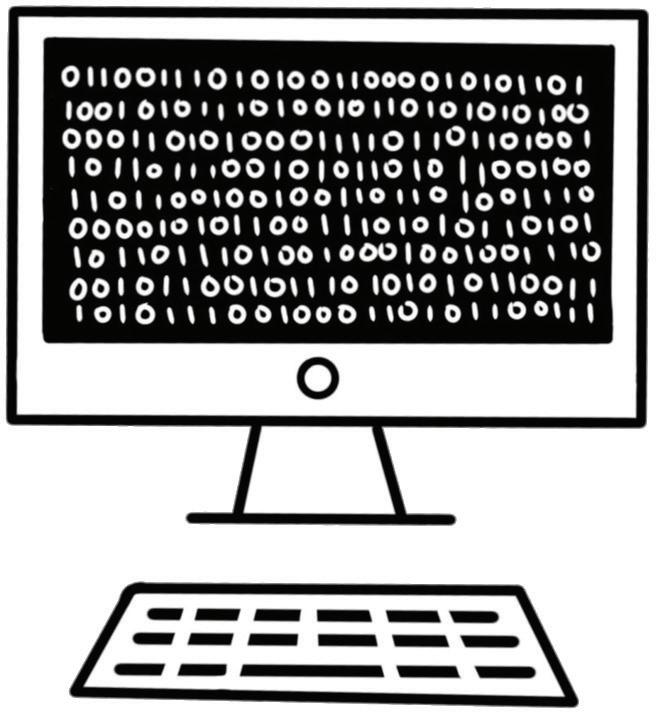



 Lifestyle Editor and Forum Editor
Lifestyle Editor and Forum Editor






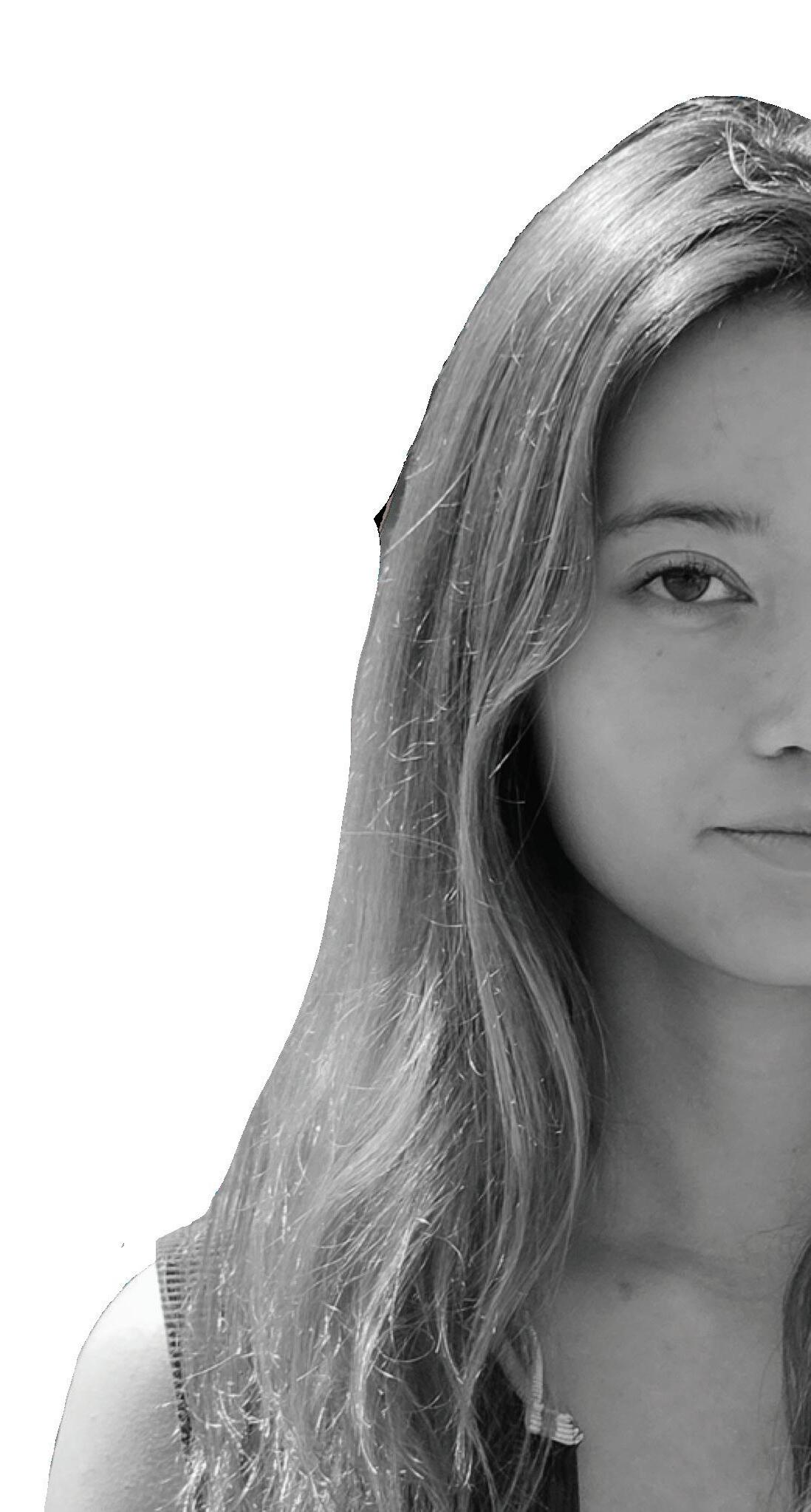
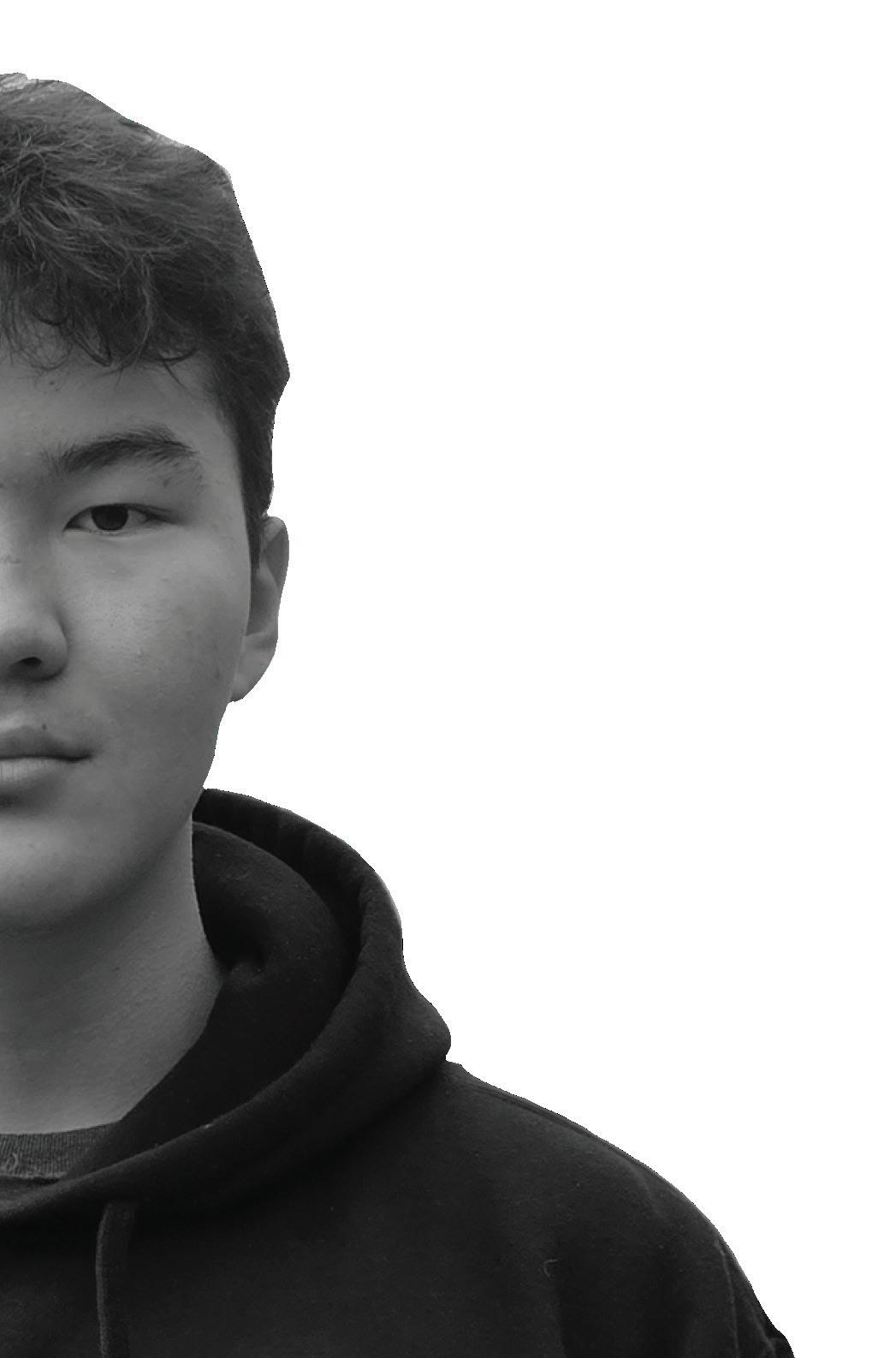
Computer science teacher Joshua Paley was guiding a group of freshmen around campus when a former student came by and asked if he could talk to them about computer science. When Paley asked the group how many of them were interested in computer science, almost all the boys raised their hands, and half the girls raised theirs. “I asked one of the girls who didn’t have her hand up, ‘Why are you not interested in computer science?’” Paley said. “It looked like I was causing her severe pain, like she did not want to talk about it.” This gender divide surrounding interest in STEM and humanities fields is not uncommon. Enrollment statistics obtained from the Gunn administration show a continual trend of gender disparities in various subjects. A prominent example of this phenomenon is the gender makeup of Gunn’s computer science electives (Advanced Placement Computer Science Principles, Functional Object-Oriented Programming, AP Computer Science Advanced and Computer Science Capstone): This year, 30% of students are female, and 70% are male. Senior Alina Lari first noticed the gender divide in computer science in her Functional Object-Oriented Programming class, which had around 10 girls and 20 boys. “I would see all the guys huddled together, and it would seem like they’d be having so much fun, a little community,” Lari said. “Then I’d see the girls, who were just divided in general.”

The other side of the coin, where the gender composition is flipped, shows a less-pronounced but often-overlooked imbalance. In this year’s AP English Literature and Composition classes, 58% of students are female while 42% are male. In the college-preparatory 11th- and 12-grade World Literature English class, 65% of students are male and 35% are female — a split that strongly resembles the imbalance in computer science classes.
According to English teacher Kate Weymouth, many male students opt not to explore more rigorous humanities classes, even though most novels in the Gunn curriculum are written from male perspectives or by male authors. “Historically, we’ve had a very dead white male-dominated curriculum, which we’re trying to change in many ways,” she said. “But then that doesn’t necessarily mean there’s more boys (in the class).”
A similar trend exists in advanced art classes. Counting all students in AP-level art courses this year, 64% of students are female, while 36% are male. This imbalance has been a recurring experience for senior Harry Peng, who has pursued art since elementary school. “It’s pretty awkward to be in a space where literally every single one of your classmates are girls,” he said. “You don’t really have anyone to talk with at first.”
I asked one of the girls who didn’t have her hand up, ‘Why are you not interested in computer science?’ It looked like I was causing her severe pain, like she did not want to talk about it.
Computer science teacher Joshua PaleyWhile the defining feature of electives is that students are able to choose classes that interest them and aren’t forced to take classes they don’t enjoy, societal pressure often influences these choices. Daunted by the negative connotations surrounding pursuing art, both because of his gender and Silicon Valley surroundings, Peng struggled to fully commit to it. “I hesitated a lot during sophomore year (about) whether or not to pursue computer science, like what … society wanted me to do, or pursuing (the) arts, which I felt more comfortable (doing),” he said.
A 2023 study by the University of Houston led by Assistant Professor of Psychology Allison Master found that girls in first through third grade are equally open to learning coding and computer science as boys. Their interest and confidence, however, start to decrease around third grade, when they are exposed to STEM gender stereotypes through books, shows and social media. According to the study, the media often portrays computer scientists as white and Asian men, with limited representation for women and other people of color.
subconsciously communicating and acting on prejudiced beliefs. “I think (these stereotypes) steer people one way or the other, whether they know it or not,” Granlund-Moyer said. “It’s our society that’s got these biases, but it’s also ingrained in all kinds of people.”
At the middle and high school level, students often care strongly about their social image and are particularly vulnerable to pressure to conform to societal stereotypes, according to Granlund-Moyer. “Young women get a lot of messages,” she said. “Teenagers are at a pretty impressionable age, and also at an age where they’re striving to fit in.”
I think (these stereotypes) steer people one way or the other, whether they know it or not. It’s our society that’s got these biases, but it’s also ingrained in all kinds of people.
Engineering teacher Kristina GranlundMoyerThese messages add up: Paley has noticed that many girls are reluctant to take computer science classes or even come up to the computer science table at elective fairs, a problem boys don’t have. In Lari’s experience, these choices then influence girls’ career pathways. “By the time they reach high school, many girls have made their decision not to pursue degrees in computer science, because they feel like they don’t belong,” she said.
Due to flipped societal stereotypes and family influences, boys may hesitate in studying the humanities. Gunn’s STEM-centered environment exacerbates the trend: Stories of technology pioneers such as Steve Jobs or science geniuses like Robert Oppenheimer can cause male students to see STEMrelated fields as the clearest career path.
Peng, who has experienced these societal pressures, noted that the most harmful interactions are under the radar — implied biases or subtle cues given off by body language or tone. “I’ve heard people getting judged because they’re a boy pursuing art in their life,” he said. “People are just thinking it’s weird, because not a lot of boys like art.” For him and other students breaking gender norms, these microaggressions only add to the perception that a student isn’t where they belong or doing what they should be.
respected my opinion.”
These experiences can discourage students from taking advantage of useful opportunities. Lari believes girls should learn about computer science, even if they don’t pursue it as a career, because applications of computer science are ubiquitous. “It’s super important to have more girls become involved before, hypothetically, it’s too late,” she said.
The cost of these biases — lost opportunities and confidence — necessitates efforts for change. Thankfully, students have found ways to combat the gender gap. For example, tech-related clubs for girls can provide supportive environments and encourage more girls to pursue STEM. “When I joined AI for Girls, I really liked having a community of girls that were in computer science,” Lari said. “I felt like I wasn’t judged.”
Another, indirect form of encouragement is having role models. According to Granlund-Moyer, female role models in STEM have an important influence on girls’ interests and career decisions. “Maybe I would have turned out a very different person had my mother not actively gone back to college and worked on her Ph.D. when I was growing up,” she said.
For students who do not have these role models in their lives, teachers have also worked toward closing the gender gap in their classrooms. “Something that I’d like to focus on this year is transitioning towards sharing more contemporary artists that are diverse, of different ethnicities and different genders, so that the students don’t feel so limited,” Su said.
It’s super important to have more girls become involved before, hypothetically, it’s too late.
Senior Alina LariFor Granlund-Moyer, another important step is pointing out microaggressions and biases to reduce prejudice. “I think calling it out is really important,” she said. “Because once you name it, then people can think, ‘Do I want to follow that bias or not?’”

Engineering teacher Kristina Granlund-Moyer pointed out an example of this occurrence in the engineering workbook for Digital Electronics, which portrays two white men on the first page. “There’s no (explicit) message there that says you can’t be a good engineer unless you’re a white guy,” she said. “But it’s just a little subtle message: ‘This is what we think engineers look like.’ There’s a lot of subtle stuff all over the place. I don’t think we’re aware of it.”


The Houston study also found that adults and schools can pass these stereotypes on to younger children by
Art teacher Anita Su explained that the expected profitability of STEM versus humanities careers adds to the problem. “(Artists) probably (don’t) make as much money as (people) working in STEM,” she said. “So perhaps, if we talk about the typical expectations of men being the breadwinner, (that stereotype is) something that’s passed down through generations.”
The gender-based academic divide can cause students to experience biased treatment and miss out on valuable learning and career opportunities.
In colleges and the workplace, a much higher percentage of women leave the engineering field over time than men, a dynamic that a 2018 Harvard Business Review study attributes to differential and exclusive treatment in work environments. In AP Physics C: Mechanics and E&M, where 23% of students are female, senior Ruth Jaquette faced this bias. “(My groupmate) was questioning my algebra, a basic part of physics that you wouldn’t blink twice at, purely on the basis that he thought I couldn’t do algebra, which was really infuriating to me,” Jaquette said. “He wasn’t listening to me through the rest of the project we were working on. ... I had to prove my intelligence before he
Humanities graphics by Elise Hu, STEM graphics by Aeron Man, dark gray background by Chinyoung Shao
These and other efforts throughout the years have contributed to a distinct increase in the number of girls interested in computer science: 36.9% of seniors enrolled in an AP-level computer science course this year are female, compared to the 22.5% in Gunn’s graduating class of 2015. In the humanities, the divide is also nearing an even split from the 30.2% of male AP English Literature and Composition students in the graduating class of 2016.
Granlund-Moyer hopes that the changing mindsets in younger generations will trickle down to create a greater balance in academic fields and careers. “There’s some hope that younger people have a different point of view,” she said. “When they themselves move up into positions of power, maybe slowly things will be changing.”
in 2015, 22.5% were female
of seniors who enrolled in an aP ComPuTer sCienCe Course were female Sources: 2015 data from school board records, current data from Gunn site records
36.9%

In February, the California Interscholastic Federation approved girls flag football as a state-sanctioned high school sport. While Gunn cannot institute it as an official, schoolsport for the 2023-24 school year due to league budget concerns, Gunn’s current club team and athletic directors across the region anticipate that it will become one next year.
Despite the sport’s CIF approval, the Santa Clara Valley Athletic League — the high school sports conference that includes Gunn — decided to hold off on implementation until the Fremont Union High School District and Santa Clara Unified School District acquired the funds they needed to start their respective programs. This decision means that schools in the SCVAL conference won’t be adding girls flag football to their official schedules for this school year.
Still, girls flag football will be a club sport this year, associated with the school but not an official seasonal sport or league member. This makes scheduling practices slightly more flexible. “(One of our) big problems is determining when (the team) will have a place to play,” Johansen said. “Since it’s a club sport, they’ll be able to practice on Sundays when school-sanctioned practices can’t happen.”
Once the field times are established, the next issue will be confirming a team coach. Currently, JLS Middle School P.E. teacher Molly Flanagan is set to coach girls flag football, but she has yet to meet the team. Finding a coach wasn’t easy — several of the girls interested in constructing the team,
including senior Ashley Sarkosh, reached out to multiple teachers at Gunn before Flanagan came on board. “We asked some teachers, and they already had other clubs or their hands were too full,” Sarkosh said.

Senior Ruth Jaquette also emphasized the importance of having a women’s sport coached by a woman. “A lot of girls have reached out to me and said, ‘Hey, is this real? Because I would totally be willing to join,’” she said. “It’s great that girls can take the lead and (have) coaches who can be positive female role models, because we need more women coaching women’s sports.”

of schools with students interested in a girls flag football team. “We (have gotten a) good idea of which schools will establish the club,” Johansen said. “Then we can make sure that we’re in contact with each other and make a contact list. Hopefully, we can even determine when they would like to play.” As of now, Milpitas High School has a club team, and Palo Alto High School will have one in the spring semester.
Prospective flag football players originally hoped to begin this fall, but the season is almost half-over. While most logistics of girls flag football as a club sport are still being sorted out, there is no shortage of girls on campus who are interested in joining — according to Jaquette, there are over 30 girls who would like to play. Many of the interested juniors or underclassmen may watch it become an official schoolsanctioned sport next school year.
Once schools in SCVAL decide whether they are fully committed to having club teams, and practice schedules and coach availabilities are confirmed, teams in the conference can start playing one another. A recent meeting among SCVAL’s athletic directors on Sept. 6 aimed to curate a list
To Gunn, girls flag football isn’t just a club sport. It’s an opportunity for girls to try something new and build a community. “It gives people a new opportunity to play a sport,” Johansen said. “I’ve been excited about it since I went to that first meeting in April. We wanted it (as a schoolsanctioned sport) this year, especially for our seniors, but unfortunately it’ll have to be next year.”
—Written by Becca Wu“My favorite moment was when Suni Lee won the 2020 Olympic all-around gold (medal in gymnastics). Simone Biles backed out and Suni Lee stepped in and won.”
“My favorite moment in women’s sports was during the 2021 NCAA final, when Haley Jones from Stanford’s women’s basketball team pulled off a really good spin move and pivot.”

“My favorite moment was what I saw on the news, that a girl (Laulauga Tausaga-Collins) from the USA got first in discus throwing.”
—TuUta Fisiiahi, 11

“I would say my favorite moment is when Sydney McLaughlin broke her own world record winning the 400-meter hurdles.”
—Avery Adelman, 12
—Compiled by Sylvie Nguyen

It’s great that girls can take the lead and (have) coaches who can be positive female role models, because we need more women coaching women’s sports.
Senior Ruth Jaquette


that I had completely lost my swimming stamina — my former years as a competitive swimmer had failed me. While I was able to swim laps without extensive breaks (or drowning), I wasn’t very fast, and other swimmers lapped me numerous times.
Last fall, former Forum Editor Carly Liao joined the tennis team. Then, during the winter season, In-Depth Editor Becca Wu fought her way through wrestling practice. Most recently, former Lifestyle Editor Michael Zhang documented his experience on the track and field team. Now, I’m diving into the Staff Sports series by joining the girls water polo team.

I initially considered joining the golf, football or volleyball teams. However, I wanted to push myself out of my comfort zone even more by joining an extremely physically demanding team sport that I, as a tennis player, hadn’t tried before. Previously, I had read on Bleacher Report, a sports-culture website, that water polo is the “hardest sport in the Olympics” because of the endurance, agility and physicality it requires. I set out to see for myself.
As the day of my first practice inched closer, I anxiously awaited my walk to the Gunn pool. I managed to find a swimsuit to use after digging through my closet, and I read articles about the basic rules of water polo in preparation for my undertaking. All that was left to do was show up.
As soon as I got to the practice, I immediately noticed the high energy and team camaraderie. After a brief team talk, in which both the coach and players pitched in to discuss formations, strategies and improvements for the team, everyone jumped up to grab caps and goggles. It was time to get in the water.
After spending two hours in the water, getting out of it was an otherworldly experience. Unable to feel my feet or legs, I felt as if I were levitating.
I jumped into the pool for warmups with little thought, unaware of my current swimming capabilities. I started by swimming laps at my own pace across the pool, focusing on freestyle and breaststroke, two commonly used strokes in water polo. However, I quickly realized
To my relief, the team transitioned into the second part of warmups: legs. We practiced the eggbeater kick — underwater kicks that mimic the circular motions of an eggbeater — to loosen our legs and stay afloat. Although I had done the kick in the past, it soon became tiring: My feet and legs grew sore as I put every ounce of energy into staying afloat.
After warmups, we practiced passing. I learned how to “dry” pass — passing the ball from one hand to the other so that it doesn’t touch the water. It took an extreme amount of effort and strength to simultaneously tread water and catch and throw a ball, but every successful trial was rewarding.
Worn out in the first half hour and desperate for a break, I latched onto the water polo cage (lingo for the water polo goal) and almost tipped the whole thing over. Thankfully, my new water polo friends gave me a pool noodle to stay afloat on for the rest of the drill.
As if I wasn’t already tired enough, I soon participated in jousting, a drill in which everyone treads water in a circle, holding a ball with one hand while trying to knock down others’ balls with the other. Jousting truly revealed the physicality of water polo: As I tried knocking someone’s ball out of their hands, I was shoved underwater, kicked and subsequently swum over. It was a humbling moment, especially because no one else seemed fazed by the drill’s roughness.
Though I was a little beaten up, I was excited to start shooting. The coach split us into positions around the cage to practice, and I soon discovered that shooting depended more on precise aiming than I had anticipated. Even though I made fewer than half of my shots, it was exhilarating to be able to rise out of the water and throw my hardest. The team was really encouraging, cheering me on and giving me advice for improvements after each attempt. I spent the rest of practice focusing on shooting, and I slowly fell into a rhythm.
After spending two hours in the water, getting out of it was an otherworldly experience. Unable to feel my feet or legs, I felt as if I were levitating. The pain, however, quickly dispelled this feeling: I could instantly feel soreness in my shoulders. Exhausted, I thanked the team and stumbled away to my car.
Not surprisingly, I could barely walk the next morning. Nevertheless, I was eager to go back to the pool. Two days

1. Doing eggbeater kicks to stay afloat. I was proud to be able to do eggbeater kicks for a majority of practice (and not drown) while also throwing, catching and shooting.
2. Witnessing “Flop Friday” and the birthday leapfrogging tradition. The traditions tied the practices together and demonstrated the positive team atmosphere.
3. Participating in a scrimmage. Everyone was super encouraging, and I got to practice my shooting technique.
later, I was back for round two. We started off practice with warmups again — first swimming, followed by eggbeater kicks to get our legs warm. I was getting the hang of it: This time, I threw and caught without the additional support of a pool noodle. With the help of a few players, I learned how to fake shots to throw the goalie off balance by adjusting hand and arm positions while rotating my shoulder.
Later in the practice, to my surprise, the coach allowed me to participate in a scrimmage. Though I still struggled to consistently stay afloat, I was excited to try out offensive and defensive positions while focusing on my technique. I practiced dry and wet passes (passes that land on the water in front of the recipient), shooting at the cage, defending and setting up attacking plays.
When practice came to an end, I witnessed two Gunn girls water polo rituals: birthday leapfrogging and “Flop Friday.” The birthday tradition involves each team member’s putting their hands on the birthday girl’s shoulders and leapfrogging over her as she kicks to stay afloat. “Flop Friday” — the less distressing tradition of the two — entailed everyone’s lining up and belly flopping into the water like dominoes.
For all those who are considering joining a sport or trying out new hobbies or extracurriculars (and at the risk of sounding like a Nike ad): Just do it.
After two practices and about five intense hours of water polo, I can indeed confirm that it might just be the hardest sport. As someone who has participated in sports for many years, I was blown away by the sheer intensity and physicality of water polo. To all water polo players out there, I have nothing but the utmost respect for you all.
The team atmosphere of water polo is also truly unmatched. I really appreciated the team’s efforts to support one another — from encouraging comments like “nice shot” to suggestions and advice on how to improve team tactics and individual technique.
Water polo may have been exhausting, but I don’t regret my decision a bit. For all those who are considering joining a sport or trying out new hobbies or extracurriculars (and at the risk of sounding like a Nike ad): Just do it. You will gain unforgettable experiences and meet lots of new people. Don’t be afraid to venture out of your comfort zone and try something new.
Gunn vs. Paly: Tuesday, Sept. 26
• Girls varsity: 5:15 p.m., boys varsity: 6:30 p.m.
Gunn vs. Los Gatos: Thursday, Oct. 12
• Girls varsity: 6:30 p.m., boys varsity: 5:15 p.m.
Gunn vs. Fremont: Thursday, Oct. 19
• Girls varsity: 6:30 p.m., boys varsity: 5:15 p.m.


“The community of the team is very fun — I try to keep it very energetic. We (the tennis team) know each other so well, and being able to hit with each other and having fun playing out there (is great).”








“The upperclassmen are really supportive of the underclassmen, and all three teams are really supportive of one another: We all go to each other’s games and cheer each other on, and we do team dress-ups before games as a whole program instead of each team individually.”
“Golf, as opposed to team sports, really teaches you about yourself, and it’s more mentally (intense). You’re not playing against other people. You’re really playing against yourself.”
“Water polo is one of the toughest sports both mentally and physically — and being part of a sport that forces you to push yourself really helps you grow as a person. We also have super fun dress-ups, a super good team atmosphere and everyone wants to work hard.”
“For the past two years, we have won CCS (Central Coast Section) championships, which has been a great accomplishment for our team and Gunn athletics as a whole. Throughout the years, we (have) become really close as a community and team, and it is a great place to make friends and participate in a really fun sport.”
“It’s a good way to stay fit and meet up with other people, and it’s really fun being able to compete against hundreds of people in meets.”




“Dance team is a great place to meet new people and grow and learn dances together. Dance itself is very special because it’s not just a sport — it’s an art form as well. You can express (yourself).”


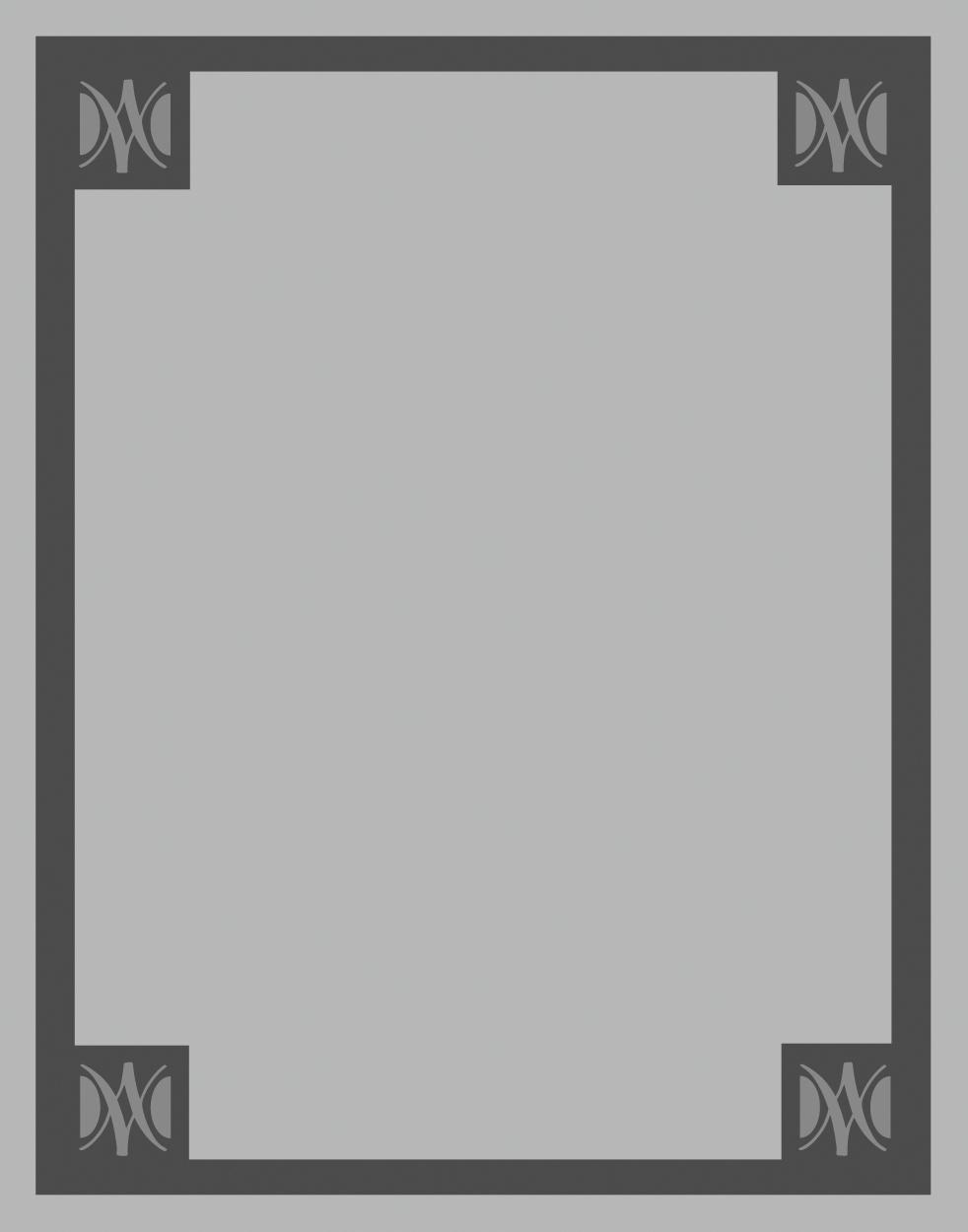
“It’s just fun to be a part of a community. We also do a lot of different activities: We go to football games and basketball games, and we have our own competition. There’s a big variety of stuff that we do. It’s also a really fun way to be active.”
“(I joined because) being able to start this program would be a really fun experience, and (it’s) an empowering idea. I think people should join so that we can actually get a prep for the sport. It’s a lot more fun than football because you don’t have to get tackled.”


“(My favorite part of the football team is) the reward of playing games on Friday with my teammates. They’re all my friends, so I just hang out with them and spend time with them. I love my coaches too. They’re fun to be around.”

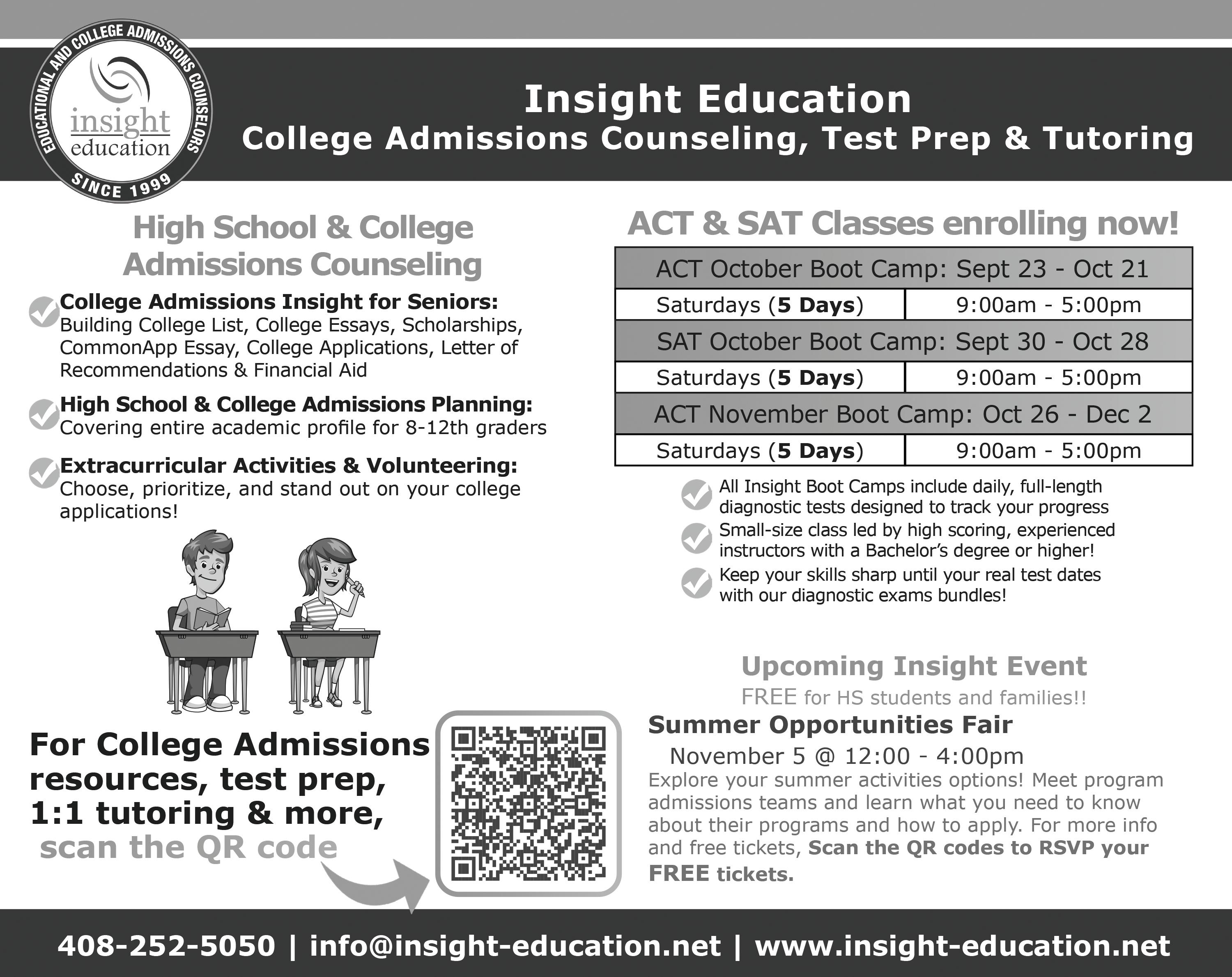


Instagram, Facebook, Snapchat, Twitter, TikTok — these are just a few of the many social media platforms that students use in their daily lives. The 2021 Common Sense Media Census found that 62% of 13- to 18-yearolds use social media every day. Moreover, according to a self-selected survey sent out to Gunn students by The Oracle from Sept. 8 to Sept. 15 with 154 responses, 75.3% of students spend an hour or more on social media daily. These apps can become highly addictive, causing teenagers’ attention spans to decrease.
It changes the wiring of our brains altogether, which is one of the reasons why we have seen a decrease in attention capabilities in teens and young adults in real life.
Psychology teacher Max Zipperstein
This attention-span decrease is a well-documented phenomenon. The abundance of short-form content on social media, such as Instagram Reels and YouTube Shorts, conditions students to receive information in bite-sized portions and hinders their ability to interpret longer pieces of media.
According to psychology teacher Max Zipperstein, research indicates a direct correlation between social media use and decreasing attention spans. “On social media, we can quickly scroll to the next feed if we are uninterested in the content being delivered,” he wrote in an email. “It changes the wiring of our brains altogether, which is one of the reasons why we have seen a decrease in attention capabilities in teens and young adults in real life.”
This relationship is corroborated by student experiences at Gunn. “(Social media) makes us more interested in short-term boosts of happiness, and the fact that we scroll through a
barrage of information in a short period of time makes us Zipperstein added that social media also affects students’ ability to interact with peers. “As teenagers, our bodies are going through so many different hormonal changes, and some of us have a tendency to want to hide,” he wrote. “Social media has made it much easier for
69.3%
Distract yourself with having more human interaction, rather than turning to the device. Focus on individuals and ask questions. You may just learn a thing or two, or form a connection with someone, by having a simple conversation.
Psychology teacher Max Zipperstein
teens to hide behind their screens (and) prevented teens from learning how to appropriately handle our awkward encounters and uncomfortable social interactions with others.”
Typically, the presence of a phone or other device when completing tasks creates distractions, hampering students’ ability to concentrate for long periods of time. Other responses to The Oracle’s survey note that students mindlessly scroll through social media instead of working on schoolwork or extracurricular activities.
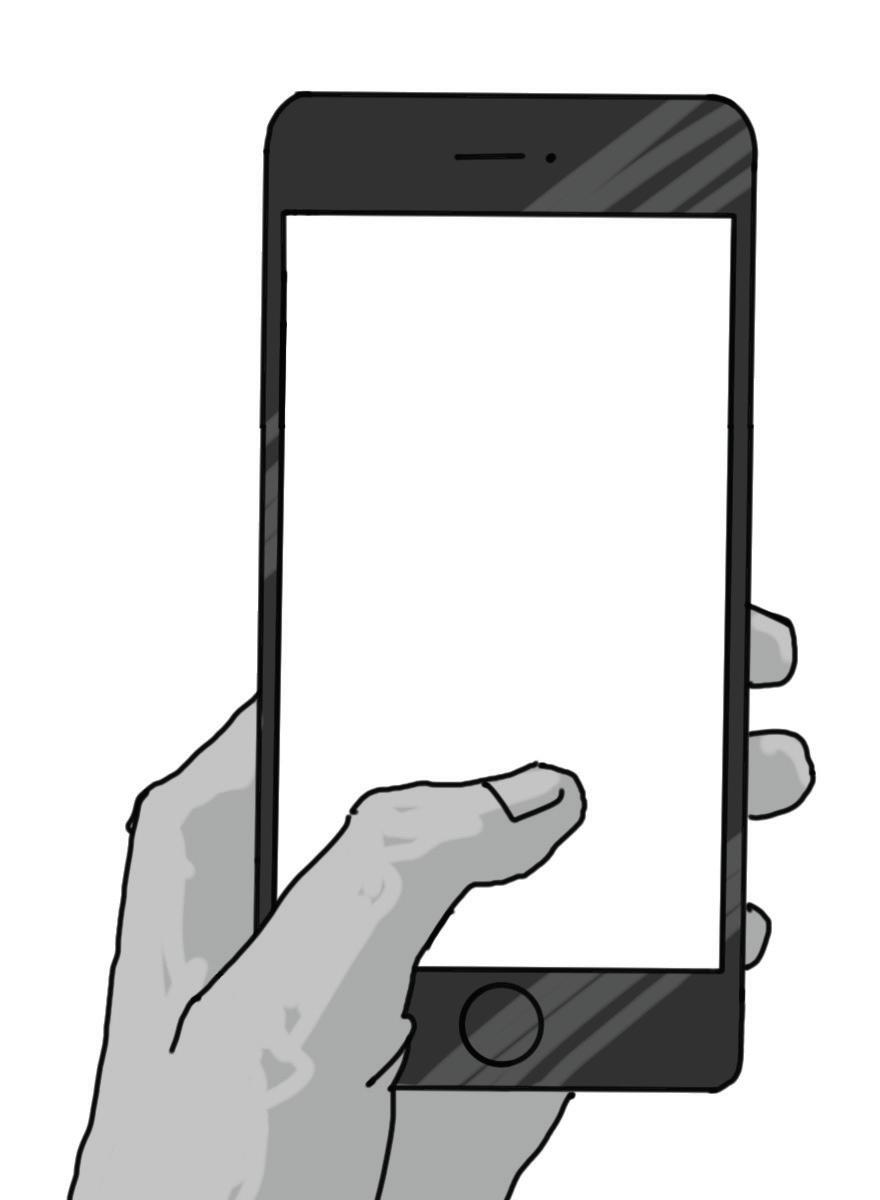
To avoid these pitfalls, Gunn students should put their phones on silent mode, set time limits on apps, designate time specifically for social media or place their devices outside of the room they’re working in. “The best practice is to turn your phone off, place it in your backpack, or somewhere out of reach,” Zipperstein wrote. “Distract yourself with having more human interaction, rather than turning to the device. Focus on individuals and ask questions. You may just learn a thing or two, or form a connection with someone, by having a simple conversation.”
—Written by Michelle KooSUrvEyED havE aTTENTioN SpaNS of lESS ThaN 1.5 hoUrSSource: Self-selected survey sent out to Gunn students by The Oracle from Sept. 8 to Sept. 15 with 150 responses Chinyoung Shao
Introducing The Oracle’s Word Ladder! Change one letter of the original word on each rung of the ladder to make a new word, going from “full” to “game.”
Stop by P-115 during 5th period or lunch next week with the completed puzzles for a candy prize!

Tit-forPublic perception
Largest Mayan city
“One Piece” and “Bleach” are examples of this Pinocchio’s famous feature


Timmy the
Acids of this variety are the monomers of proteins


Brand of spicy rolled chips
Brazilian soccer legend
Alternative name for fowl
The Spangenberg Theater bathroom embodies the word “perfect.” Perfectly pristine. Perfectly peaceful. Perfectly empty. It’s a restroom you would be lucky to find in a fine-dining establishment. With large sinks that provide ample room to wash your hands without hitting the back of the basin every time, and clean mirrors devoid of any traces of vandalism, the bathroom is fully equipped with all necessities to ensure a calm, hygienic experience. There are more soap dispensers in this lavatory alone than in both of the N-building’s boys bathrooms.
The bathroom’s charm lies in its tranquility: No need to beware of prying knocks or freshmen’s boisterous yells when using the toilet. However, only lucky students who have classes in or adjacent to Spangenberg or who slip in when the doors are unlocked can take advantage of this bathroom.

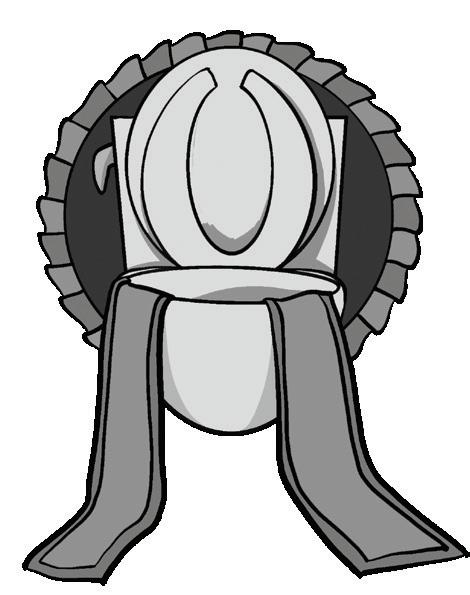



Fully equipped with three bathroom stalls and plenty of soap, the library bathroom is one of the best on campus. With backpack hangers in each stall, it offers a brief respite for those carrying heavy loads. The stalls are always stocked with more than enough toilet paper and seat covers — perfect for students who place particular emphasis on hygiene. Even if you opt out of the seat covers, there’s no reason to worry: The toilet seats are spotless and kept in tip-top condition. Standing out from other bathrooms on campus, the faucets run for a long time with just one press, eliminating the need to alternate from one hand to the other while washing them. With more commonly used restrooms dirty and the top-notch bathrooms impossible to access, this bathroom gives students a happy medium.
If the library bathroom is a leisurely stroll through the park, the J-building bathroom is the same, but with chlorine gas for air and nuclear waste instead of soil. Only desperate souls with no other choice go to this bathroom: They sprint out of their science classroom to find refuge inside the nearest lavatory, only to realize that, in their haste, they have stepped into the stalls of doom. With cramped quarters, the J-building bathroom breeds awkwardness. Moreover, the faucets pour out cloudy lukewarm water, leaving hands dirtier than before. The scratched mirrors have grubby fingerprints and traces of spray paint. Stains remain on the toilet stalls despite attempts to remove them, standing the test of time. The J-building bathroom is the worst of the worst: one that everyone should avoid if they can.
Mexican American senior Sergio Ceniceros grew up listening to fables and sayings from older relatives. “They’re like metaphors,” he said. “The things that my mom and dad grew up hearing get handed down from generation to generation. It connects you with your parents.”
Latin American and Hispanic culture has long shaped the U.S. In 1968, President Lyndon B. Johnson — spurred by Mexican American Rep. Edward Roybal — established Hispanic Heritage Week to recognize Hispanic history and contributions, and in 1988, the week was extended to a monthlong celebration from Sept. 15 to Oct. 15.
Although this recognition marked a step forward in acknowledging the diversity of the U.S., some, such as sophomore Megumi Estrada Nakamatsu, have pointed out that the blanket term “Hispanic” groups all Spanish-speaking people together, despite their cultural and geographical differences. Estrada Nakamatsu, who is Peruvian and Japanese American, feels that Mexican culture is more prevalent than South and Central American culture at Gunn. “I feel like while Mexican culture is represented, I can see that it’s not enough when it comes to South American and Central American countries’,” she said.
Countries of origin matter, especially when it comes to shared experiences, according to Spanish teacher Teresa Niño-Oliva. While she bonds with other Latin Americans through a shared language — Spanish — she feels closer to her Chilean friends because of their shared experiences. “I did not grow up here, so there are so many things that happened in my childhood that some here don’t understand,” she said. “(But) I can find that (connection) with my (Chilean) friends.”
Nevertheless, a significant characteristic of most Hispanic and Latin American cultures is the close-knit community among family and friends. A distinct part of Estrada Nakamatsu’s childhood was celebrating Señor de los Milagros with her loved ones. The Peruvian Christian celebration features a parade with a sacred image of the Purple Christ, in which purple represents devotion and royalty. “For the whole month of October, everyone wears purple,” she said. “Ever since I was born, I would dance for the celebration.”

Similarly, the stories Ceniceros’ parents told him about their childhoods in Mexico demonstrated the community’s closeness. On one occasion, his
mother told him about a neighbor’s child who died in a car crash. “(Every family) started helping financially for the funeral,” he said. “Everybody who was their neighbor came in and helped them with what they could.”



Baseball player Roberto Clemente was born in 1934 in Puerto Rico.
Hispanic and Latino Americans only make up 12.3% of Gunn students, according to the 202223 Gunn School Profile. As a result, Hispanic or Latino American students can feel alienated. Both Mexican American senior Andrea Esparza and Estrada Nakamatsu have sometimes felt isolated because of their cultural backgrounds.
“When I was younger, I was very embarrassed in my own culture because I was the only Peruvian in (my) whole school,” Estrada Nakamatsu said. “Sometimes, American culture can badly influence you because of how judgmental people can be, (and) it can make you feel very much like an outsider.”
Stereotyping only worsens this issue. Estrada Nakamatsu has heard people use offensive slang terms to describe Hispanic people. “We’re called ‘ratchet,’ or ‘ghetto,’ since in our culture, we’re super loud, (and) we’re super honest and blunt,” she said. “The term ‘ratchet’ for us is hurtful because we’re raised to be blunt and very loud — that’s how we show our care for each other.”
This stereotyping and discrimination have disheartened Esparza. “It saddens me that people are discriminating and (have) a bunch of stereotypes on Hispanics when they’re only here to make a better life, get a good education and try to move forward in life,” she said.
Despite these prejudices, Esparza is proud of her culture, where she is embraced with open arms. “What I love about the community is seeing how much we love our culture and that we’re not ashamed of expressing it,” she said.
In 1955, he moved to the U.S. and joined the Brooklyn Dodgers’ minor-league system. Clemente excelled quickly and was known for his powerful and accurate arm. His career took off when he was drafted by the Pittsburgh Pirates, and he made his majorleague debut in 1955. In 1960, he lead the Pirates to a World Series victory. After winning 12 Golden Glove awards, a Most Valuble Player award, and two World Series, he was inducted into the Baseball Hall of Fame.
Throughout his career, Clemente faced constant racism from the public, who stereotyped him as lazy because of his ethnicity. Still, he remained resilient.
Clemente devoted much of his time and wealth to supporting the Black and Hispanic communities. During the off-seasons, he ran free clinics for youth in Puerto Rico, and became closely involved with the U.S. civil rights movement. He continues to inspire Puerto Ricans and other underrepresented groups around the world.

Artist Frida Kahlo, famous for her bold, colorful self-portraits, was born in 1907 in Mexico City, Mexico. She spent most of her life in her house, “La Casa Azul,” which is now a museum dedicated to her life and work. Childhood struggles with polio, as well as serious injuries from a bus accident, informed her work, which often included wounds, blood and plaster casts.
Kahlo is also known and revered for her dedication to women’s rights. She did not focus on beauty in her self-portraits, but rather on the reality of women’s experiences, including miscarriages, abortion and breastfeeding. Her work thus inspired other women to defy beauty standards. Kahlo was also openly a part of the LGBTQ+ community, which was uncommon during this time period. She lives on as a symbol of Hispanic pride and feminism.
Dancer and singer Rita Moreno was born in 1931, in Puerto Rico. She started taking dance lessons at a young age, and her family moved to New York City in 1936. Moreno made her Broadway debut as Angelina in the play “Skydrift,” and entered the film industry five years later. However, casting directors mainly placed her in ethnically stereotypical roles, which frustrated her. In 1961, she played Anita, a central character in “West Side Story,” a role that earned her an Oscar and a Golden Globe award. After “West Side Story,” she no longer allowed herself to be cast in stereotypical roles.
As Moreno became famous, she grew more vocal about supporting social justice and ending discrimination. In 1965, she joined a Hollywood delegation and attended the March on Washington, where Martin Luther King, Jr., delivered his “I Have a Dream” speech. She went on to become the first and only Latina to achieve an “EGOT,” meaning she won Emmy, Grammy, Oscar and Tony awards.
 Sophomore Megumi Estrada Nakamatsu attends a celebration of El Señor de los Milagros, a major Peruvian holiday, in San Jose.
Senior Andrea Esparza celebrates Las Posadas, the Latin American celebration of the birth of Jesus, with her family.
—Written by Fiona Xiong
—Written by Zoe Leontis Graphics by Karis Lau
Sophomore Megumi Estrada Nakamatsu attends a celebration of El Señor de los Milagros, a major Peruvian holiday, in San Jose.
Senior Andrea Esparza celebrates Las Posadas, the Latin American celebration of the birth of Jesus, with her family.
—Written by Fiona Xiong
—Written by Zoe Leontis Graphics by Karis Lau
What I love about the community is seeing how much we love our culture and that we’re not ashamed of expressing it.
—Senior Andrea EsparzaPhoto courtesy of Andrea Esparza Photo courtesy of Megumi Estrada Nakamatsu